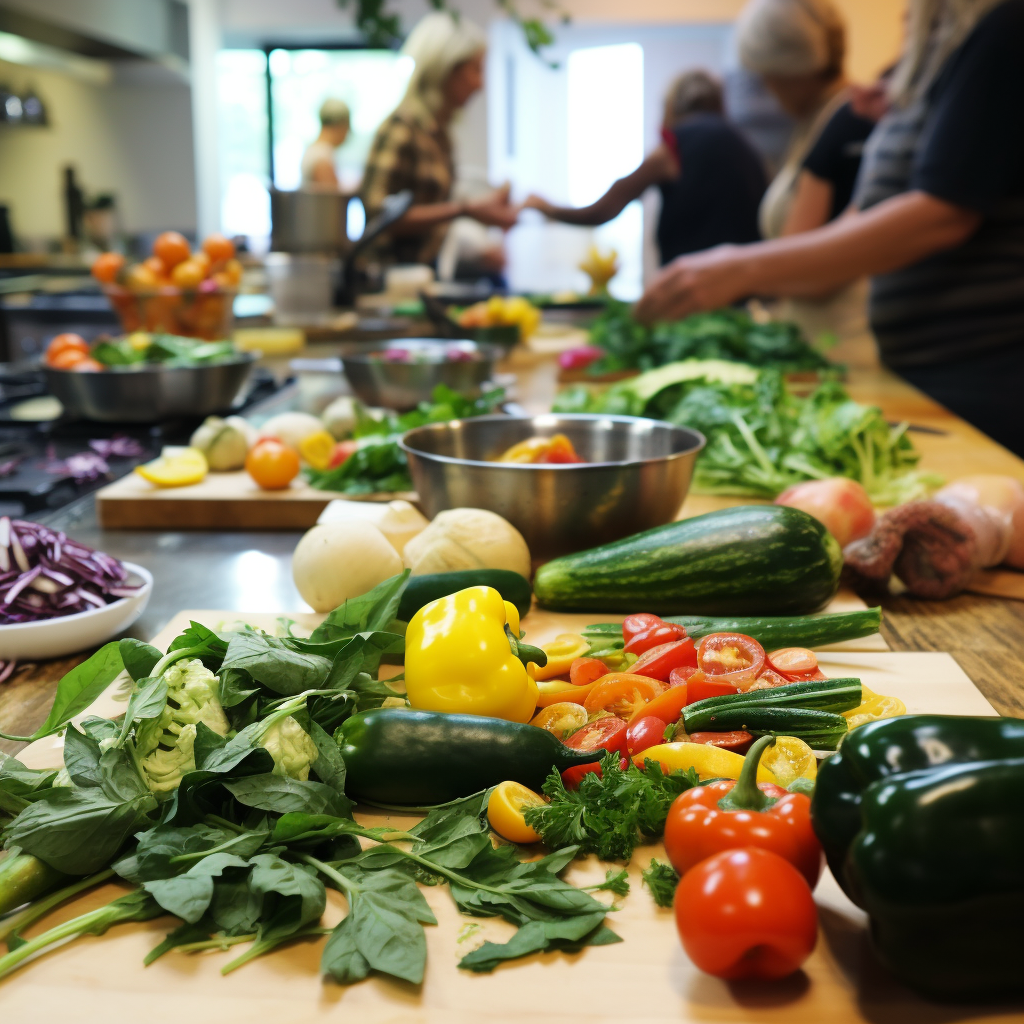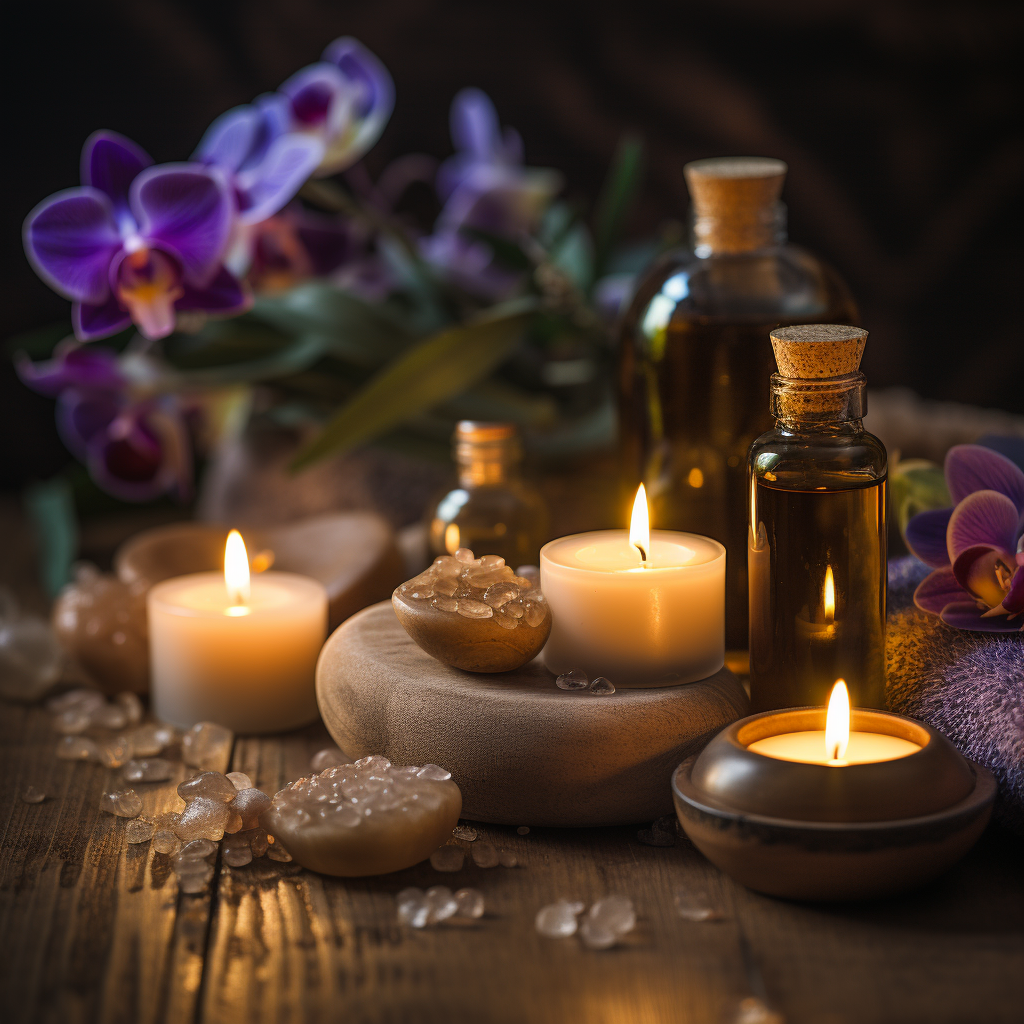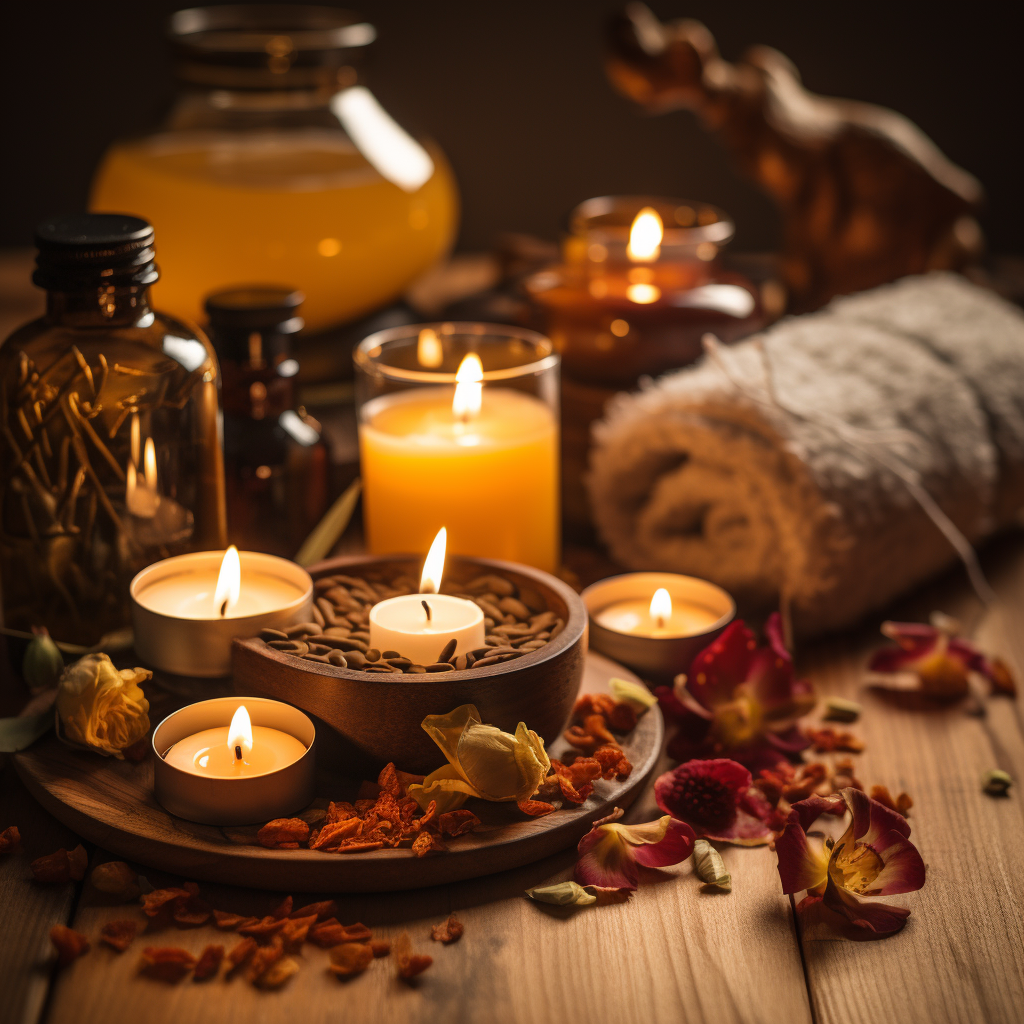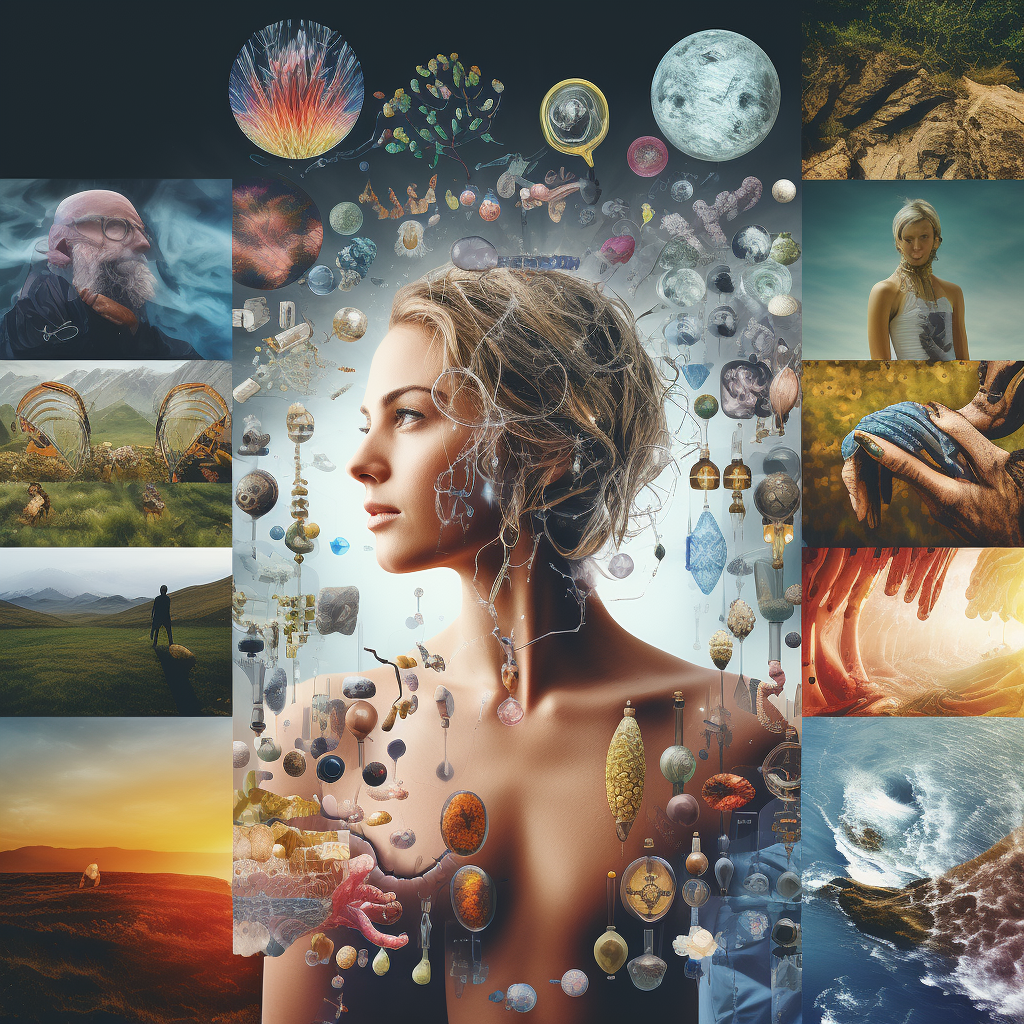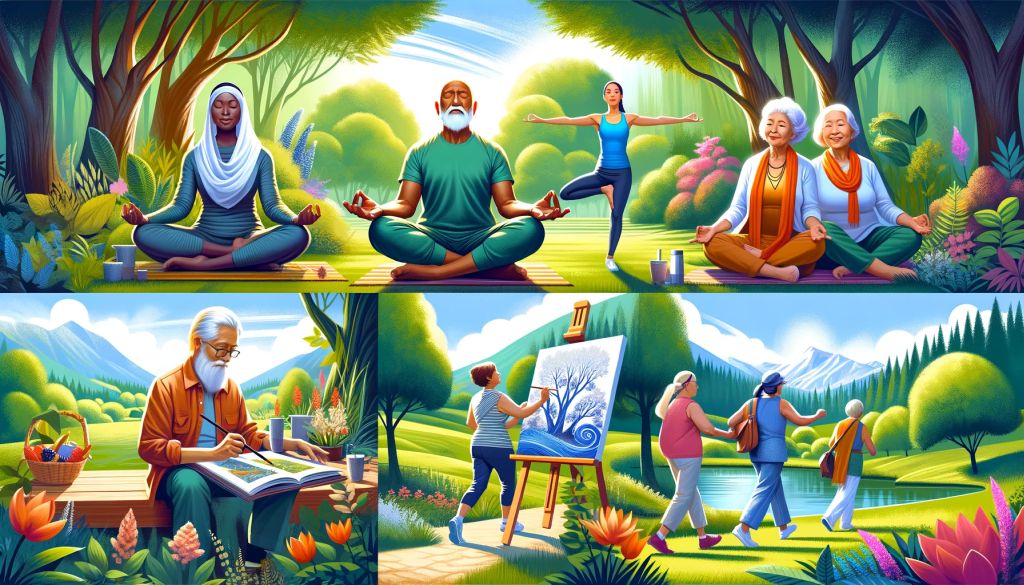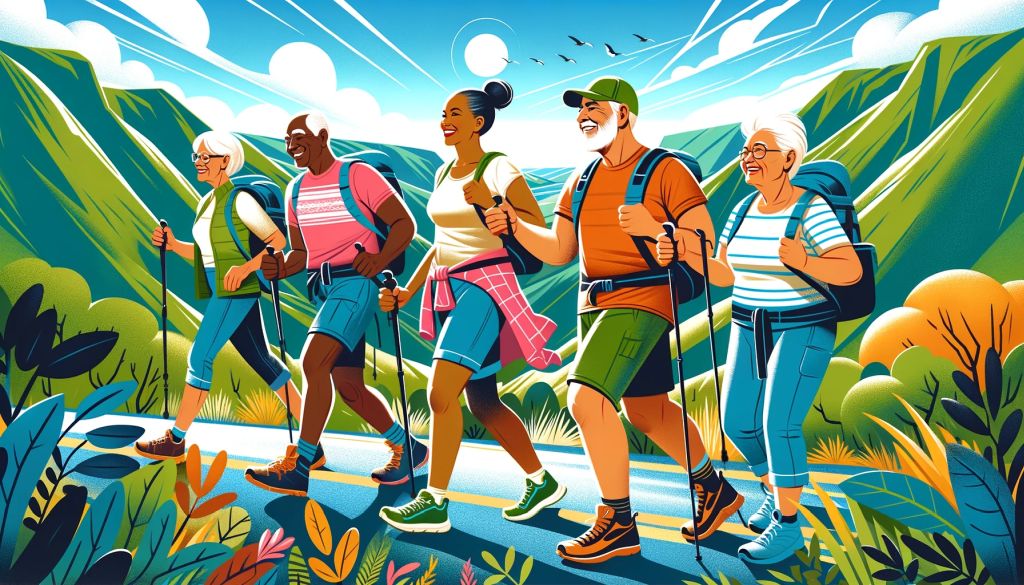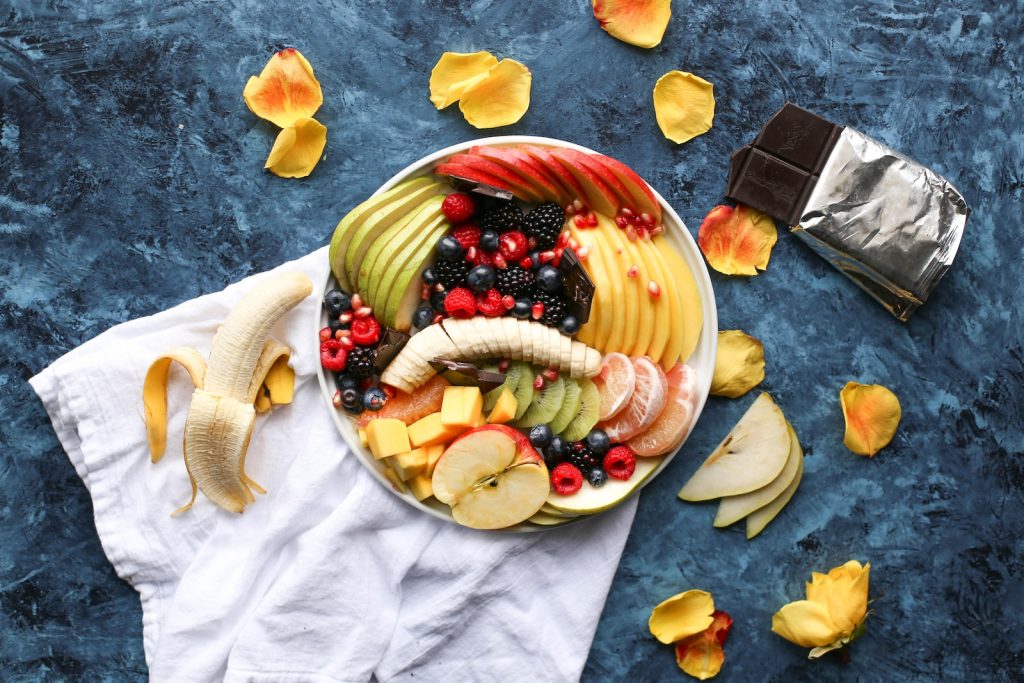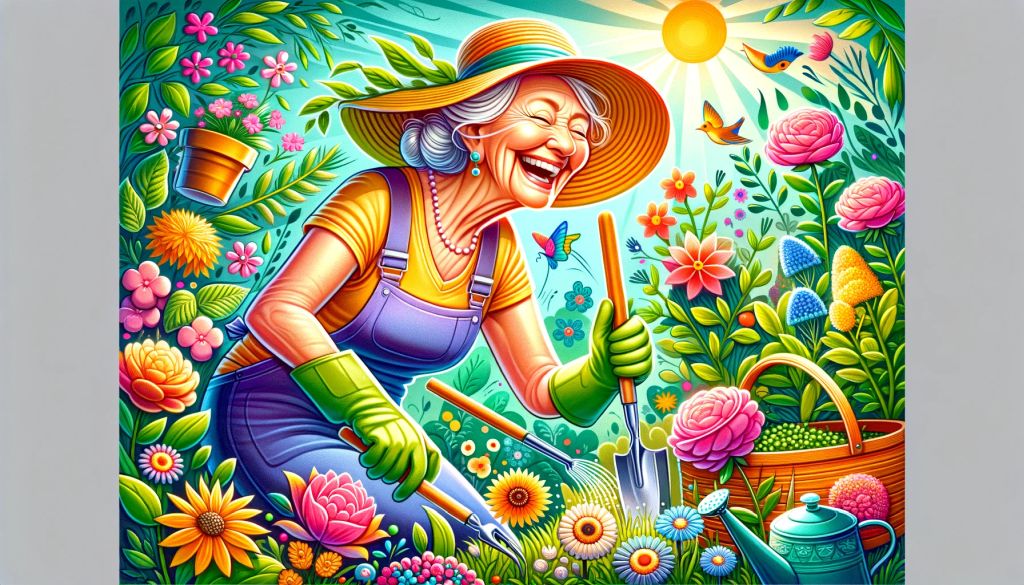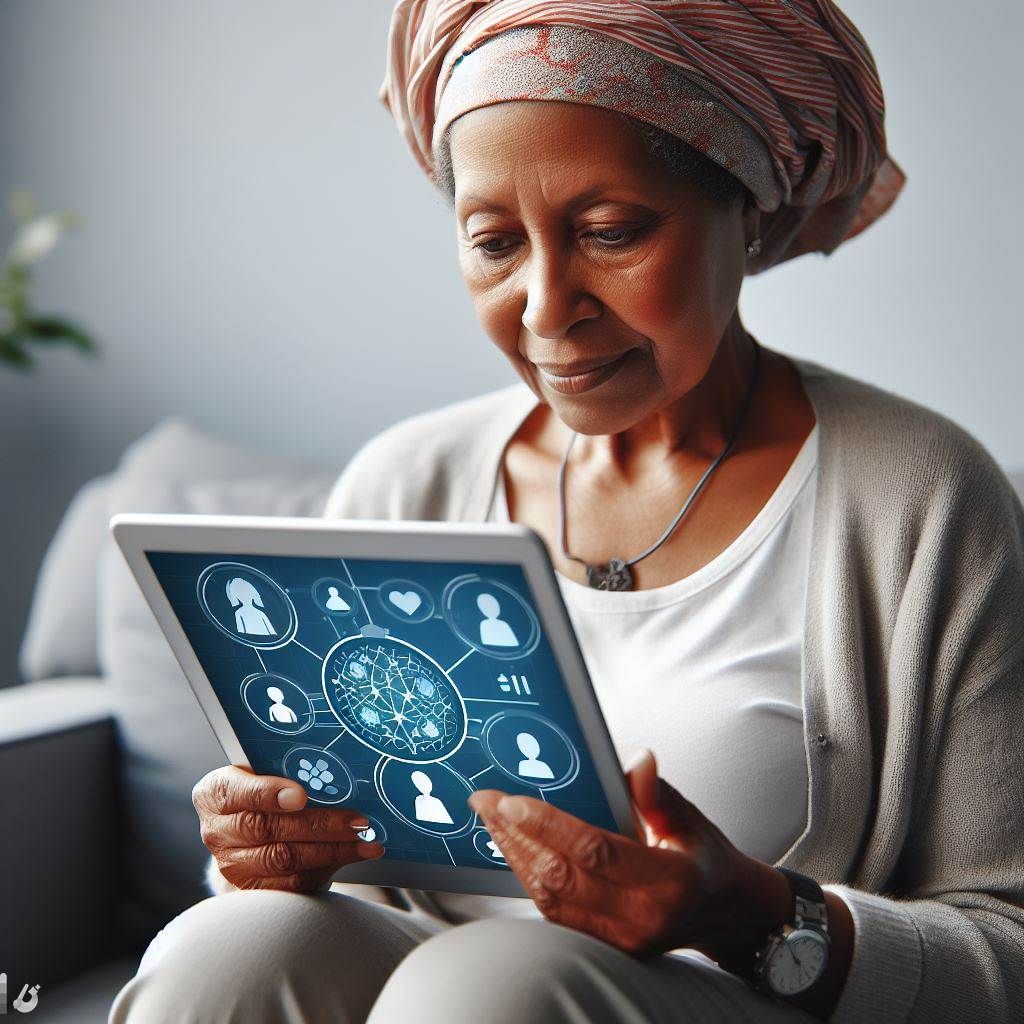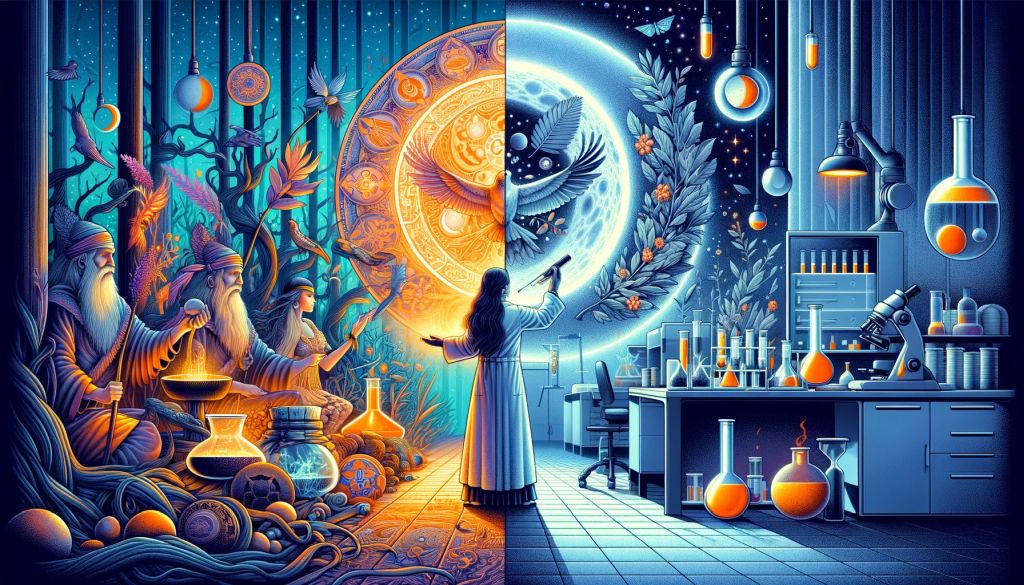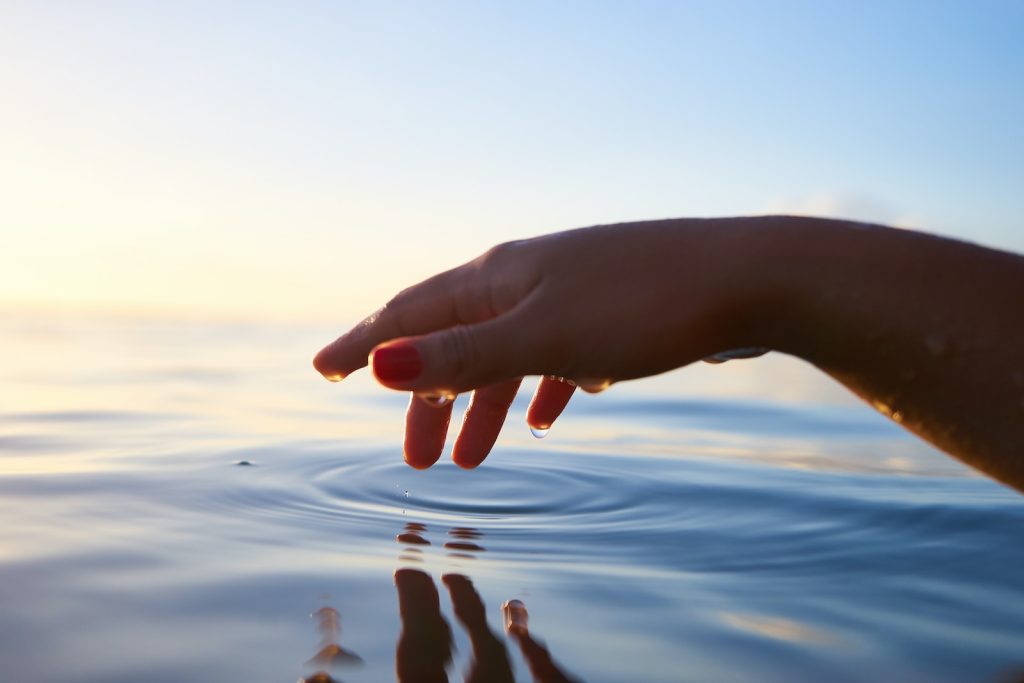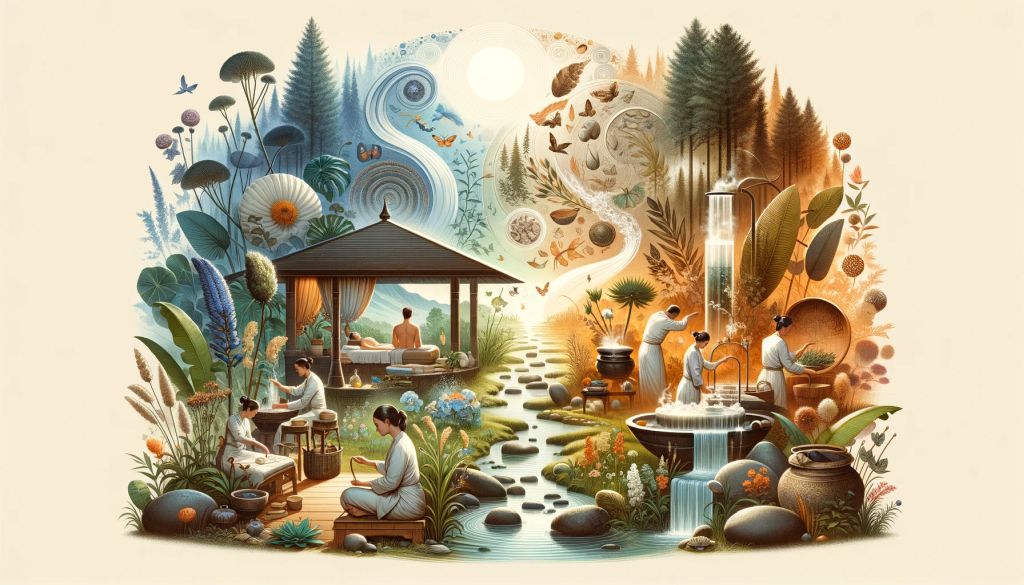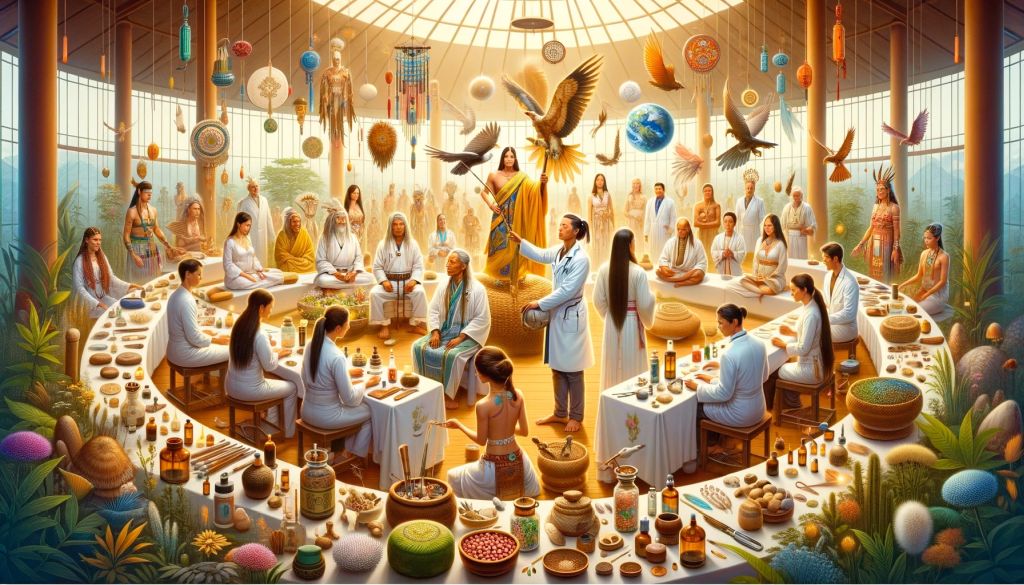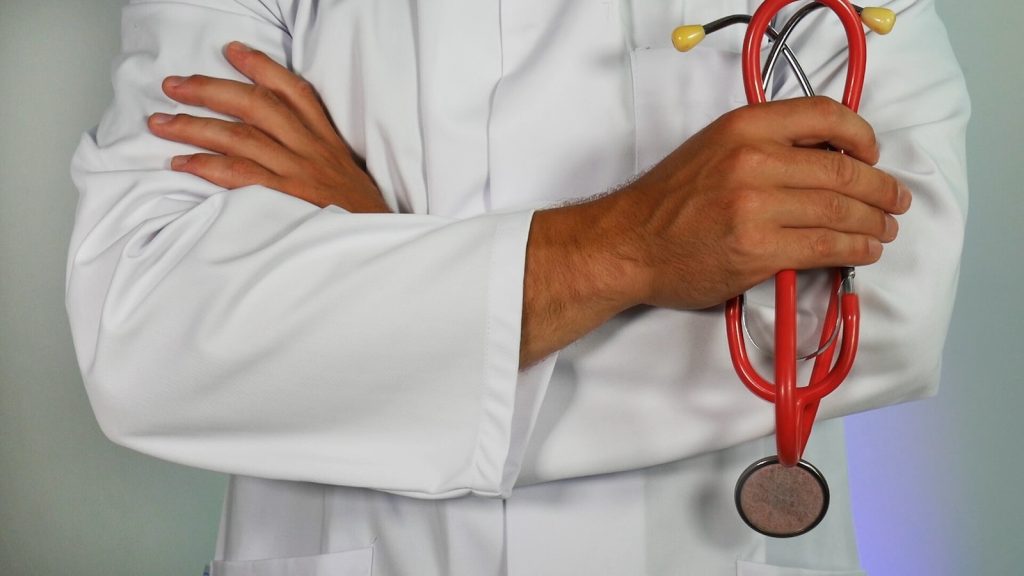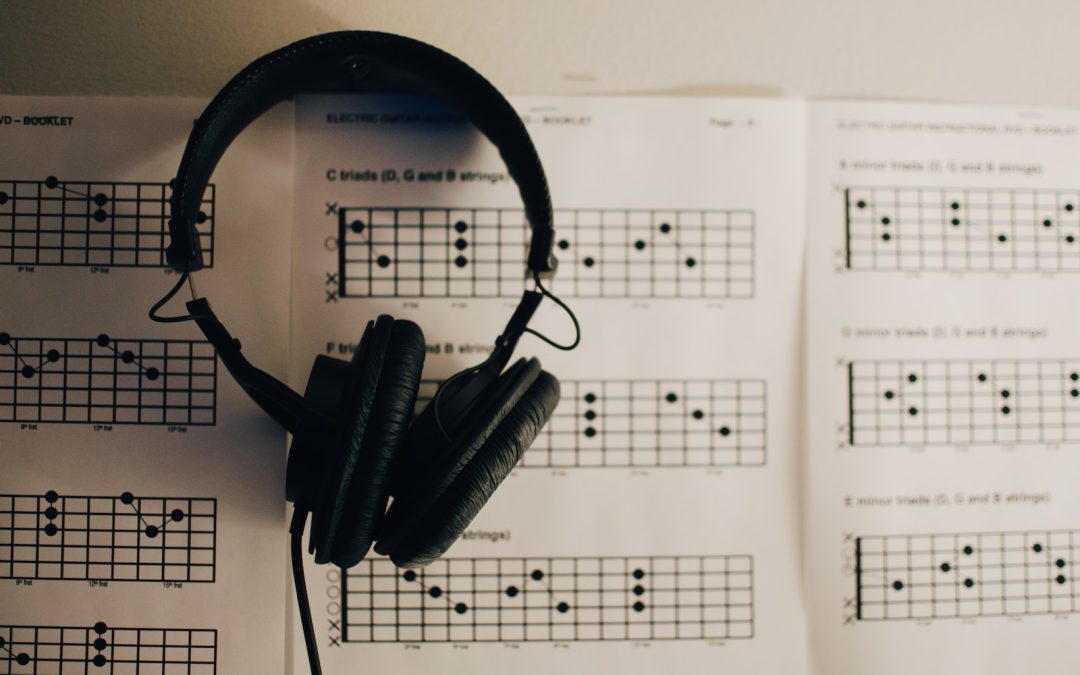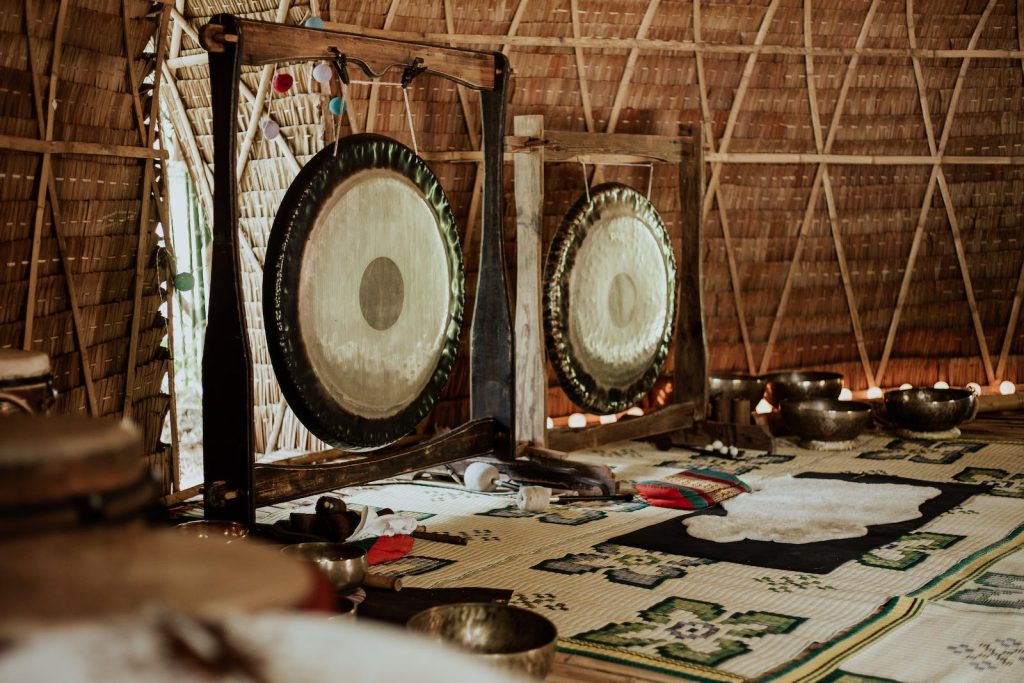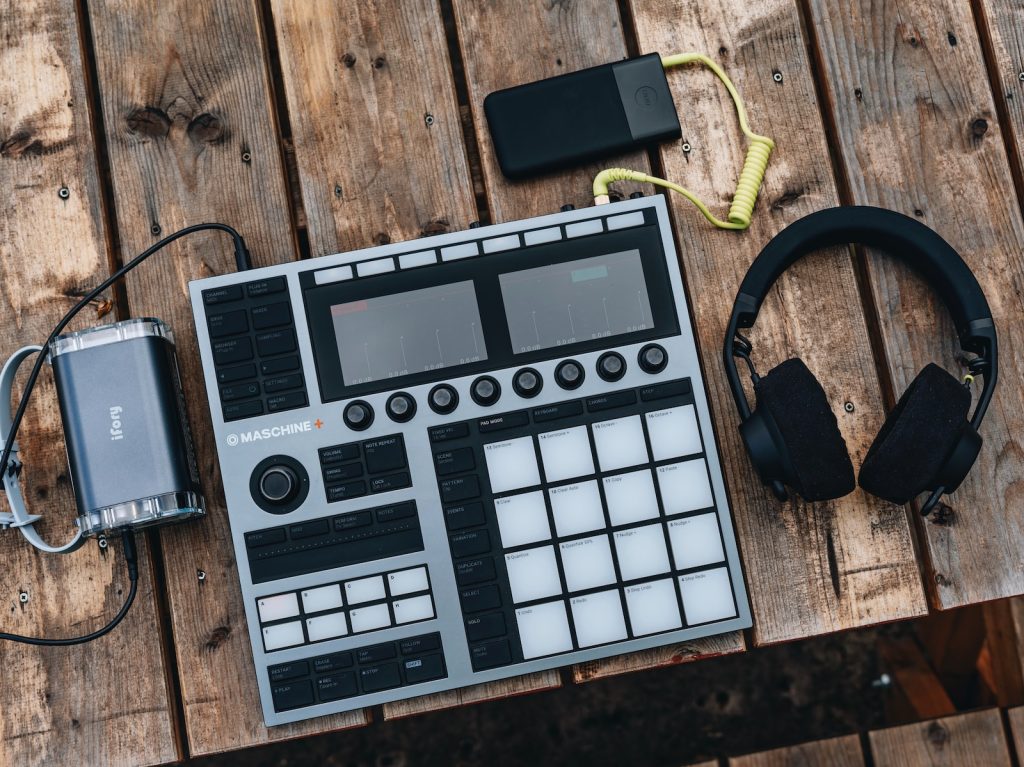
by Elizabeth Redd | Feb 15, 2024 | Holistic Living, Mindfulness, Natural Remedies
The concept of the holistic way is not confined to a single country or culture. Embracing a holistic approach to health means recognizing that our well-being is influenced by the interconnection between our physical, mental, emotional, and spiritual states. This approach transcends geographical boundaries and can be traced back to ancient civilizations across the globe. From the Ayurvedic traditions of India to the indigenous healing practices of Native Americans, the holistic way has been a fundamental aspect of various cultures’ approach to health and wellness.
For instance, Traditional Chinese Medicine (TCM) with its deep roots in China, emphasizes the balance of Qi, the vital life force, as essential for good health. Similarly, the Greek philosophy of balancing the four humors influenced European medical practices for centuries. In Africa, traditional healers have long used herbs and spiritual rituals to treat the whole person. These diverse practices, although varying in methodology and philosophy, all share a common thread – the belief that health is a state of complete harmony and not merely the absence of disease.
As we delve into the holistic way from which country it originated, it becomes clear that this is not a concept owned by one nation but rather a collective wisdom shared by many. It’s a testament to the interconnectedness of human knowledge and the universal desire for harmony and balance in life.
Ready to kickstart your wellness journey? Sign up for our content to receive exclusive tips and updates. Take the first step towards a healthier, happier you! Join Our Community Today!
Tracing Holistic Health: Ancient Civilizations and Practices
The holistic way of health can be traced back to several ancient civilizations that laid the groundwork for today’s holistic practices. In India, Ayurveda, which literally translates to ‘the science of life,’ began over 5,000 years ago and is still practiced today. It is based on the belief that health and wellness depend on a delicate balance between the mind, body, and spirit, and it employs natural treatments, diet, exercise, and lifestyle changes.
In China, Traditional Chinese Medicine (TCM) developed around 3,000 years ago and incorporates herbal medicine, acupuncture, and tai chi to maintain harmony within the body and with the outside world. The concept of Yin and Yang – opposing forces that are interconnected and interdependent – is central to TCM’s understanding of health.
Similarly, ancient Egyptians are known for their use of herbal medicine and spiritual healing, often invoking deities in their quest for health. The Greeks, led by figures such as Hippocrates, often referred to as the ‘Father of Medicine,’ also emphasized the importance of environmental factors and balanced diets to prevent and cure diseases.
Across the Atlantic, Native American healing practices are deeply rooted in a spiritual understanding of life and the belief in a strong connection between health and harmony with nature. These practices often involve herbal remedies, purification rituals, and the guidance of healers known as shamans.
Each of these ancient systems reflects a deep understanding of the holistic way, recognizing that our health is affected by more than just physical symptoms. They highlight the importance of balance and integration in the pursuit of health and wellness, principles that are still relevant and revered in holistic health circles today.
The Birthplace of Holistic Medicine: Uncovering the Origins

Uncovering the birthplace of holistic medicine is akin to a journey through time and across cultures. While it is challenging to pinpoint a single origin due to the parallel development of holistic practices globally, many agree that the holistic way from which country question often leads us to the ancient subcontinent of India. Here, Ayurveda, the earliest formal system embodying the principles of holistic health, was conceptualized. The Vedas, ancient Indian texts, contain some of the first recorded notions of holistic health, emphasizing the interconnectedness of the body, mind, and spirit.
However, holistic medicine’s roots are not confined to a single region. In various forms, it has been an integral part of many indigenous cultures, from the Aboriginal peoples of Australia who engaged in spiritual healing practices to the African tribes that used traditional herbal remedies and community healing rituals.
The traditional Greek philosophy of balancing the ‘four humors’ also reflects holistic principles, suggesting that maintaining the right balance of blood, phlegm, black bile, and yellow bile is essential for good health. This belief permeated throughout the Mediterranean and influenced the development of Western medicine.
Historically, these disparate practices were not known as ‘holistic medicine’ per se, but they all shared a common understanding of treating the individual as a whole rather than focusing solely on the disease. It is this foundational belief that has carried through the ages, leading to the contemporary holistic health movement that integrates traditional wisdom with modern knowledge to promote healing and wellness.
Cross-Cultural Contributions to Holistic Health

The tapestry of holistic health is rich with the threads of numerous traditions and practices from around the world, each contributing its own unique patterns to the form we know today. It is a practice that transcends borders and eras, weaving together the wisdom of countless cultures in pursuit of complete well-being.
From the Native American healing rituals that emphasize a deep connection with nature and spirit, to the Chinese philosophy of balancing the body’s Qi through acupuncture and Tai Chi, holistic health is a true mosaic of global insights. The Chinese contribution, Traditional Chinese Medicine (TCM), is one of the most well-known systems, with its fundamental belief in the Yin and Yang energies and the five elements that govern the human body and its environment.
In the Middle East, Unani medicine, a system based on the teachings of Hippocrates and Galen, flourished. It, too, focuses on the balance of elements within the body and uses natural remedies, such as herbs and minerals, to treat patients holistically.
In Europe, during the Renaissance, a renewed interest in ancient Greek and Roman medical texts led to the integration of holistic concepts with emerging scientific thought. The holistic approach was overshadowed somewhat by the rise of allopathic medicine during the 19th century, but it never disappeared. In fact, it continued to be practiced and evolved alongside conventional methods.
Furthermore, the African continent’s contribution through its myriad of tribal healing traditions, which include spiritual healing, herbalism, and community-based practices, reminds us that holistic health is as diverse as it is ancient.
Understanding these cross-cultural contributions is essential. They not only provide historical context but also offer a variety of tools and perspectives that can be integrated into modern holistic practices, allowing for a more inclusive and comprehensive approach to health and healing.
Modern Holistic Movements: Global Synthesis and Evolution

The evolution of holistic health continues to flourish in the modern era, with a global synthesis of traditional practices and contemporary scientific understanding. As the world becomes more interconnected, the exchange of knowledge accelerates, allowing for an unprecedented integration of ancient wisdom and innovative health modalities.
In recent decades, there has been a significant resurgence in the demand for holistic approaches to health and wellness. This has been driven by a growing dissatisfaction with the limitations of conventional medicine, particularly its focus on symptom management rather than addressing the root causes of illness. In response, modern holistic movements are increasingly embracing a more integrated approach that considers the physical, emotional, mental, and spiritual aspects of an individual.
Yoga and meditation have seen a meteoric rise in popularity across the Western world, with their roots in ancient Indian philosophy. Mindfulness practices, which have origins in Buddhist traditions, have been widely adopted in psychological therapies to help manage stress and improve mental health outcomes.
Naturopathy, which combines natural remedies with modern diagnostics, is another example of how traditional and modern practices are being synthesized. Similarly, functional medicine, a systems biology-based approach that aims to identify and address the root causes of disease, exemplifies the modern holistic movement’s drive towards a more patient-centered and preventative approach to health care.
The surge in popularity of organic foods, the use of essential oils, and the resurgence of interest in herbal remedies all signal a collective shift towards embracing a more holistic way of living. This modern holistic movement is not just a return to ancient practices, but an evolution that adapts and integrates these traditions with contemporary life, creating a more balanced and sustainable approach to health that is accessible to people across the globe.
Holistic Health Today: A Blend of Traditions and Innovations

Today’s holistic health landscape is a vibrant tapestry woven from the various threads of traditional practices and cutting-edge innovations. As societies progress and healthcare evolves, the holistic approach adapts, forming a unique blend that is both timeless and timely.
The holistic way is now characterized by its inclusivity and diversity, embracing techniques from across the world. Acupuncture and traditional Chinese medicine, Ayurveda, Reiki, and countless other practices coexist with modern nutritional science, biofeedback, and genomics. This confluence is evidence of a collective yearning for a more comprehensive, personalized form of healthcare—one that empowers individuals to take charge of their wellbeing and promotes balance in all facets of life.
Technological advancements have played a significant role in this evolution. Wearable health devices, fitness trackers, and mobile health apps provide data that can be used to tailor wellness regimens to the individual’s unique needs. Likewise, telemedicine and online wellness platforms offer greater access to holistic health resources, making it possible for anyone with an internet connection to learn about and implement holistic practices.
As we witness the continuous blending of traditions with innovations, it becomes clear that the holistic way is not static; it is a living, breathing philosophy that grows and changes to meet the needs of each new generation. It is a journey of self-discovery and healing, one that invites us to explore the depths of our being and the breadth of the world’s healing modalities.
Ready to kickstart your wellness journey? Sign up for our content to receive exclusive tips and updates. Take the first step towards a healthier, happier you! Join Our Community Today.!

by Elizabeth Redd | Feb 15, 2024 | Holistic Living, Mindfulness, Natural Remedies
Embarking on a journey toward holistic health can be both enlightening and empowering. Alternative medicine, a term that encompasses a myriad of non-conventional healing practices, aims to treat the whole person – mind, body, and spirit. Unlike traditional medicine, which often focuses on alleviating symptoms, alternative medicine seeks to address the root causes of health issues, fostering a deep sense of well-being and balance.
From acupuncture and aromatherapy to herbal remedies and mindfulness meditation, alternative medicine practices offer a diverse range of options for those seeking a more integrative approach to health care. These practices often draw on ancient wisdom and may be used alongside conventional treatments to enhance overall health. For many, finding “alternative medicine practices near me” is a critical step towards embracing a lifestyle that prioritizes natural and preventative care.
Ready to kickstart your wellness journey? Sign up for our content to receive exclusive tips and updates. Take the first step towards a healthier, happier you! Join Our Community Today.!
As people increasingly recognize the interconnectedness of their physical, emotional, and spiritual health, the demand for alternative medicine continues to grow. By exploring these practices, individuals can discover personalized paths to healing that resonate with their unique needs and philosophies. It’s a transformative process that not only helps to alleviate ailments but also enhances one’s capacity for joy, energy, and resilience.
Key Benefits of Alternative Medicine Therapies

Alternative medicine therapies offer a myriad of benefits that contribute to a person’s overall well-being and can be a pivotal aspect of a holistic health regime. One significant advantage is the emphasis on prevention and the maintenance of health rather than merely treating disease. By focusing on lifestyle changes, nutrition, and stress reduction, these therapies can help to prevent illness from occurring or reoccurring.
Another key benefit lies in the personalized care that practitioners of alternative medicine provide. Treatments are often customized to the individual, taking into account not just their symptoms but also their lifestyle, emotional state, and overall health. This tailored approach ensures that the therapy aligns with the patient’s unique health needs and personal wellness goals.
Many alternative therapies also promote self-empowerment. Patients are encouraged to take an active role in their healing process, learning techniques and strategies to improve their health that they can use throughout their lives. This enhances self-awareness and gives individuals the tools they need to take control of their well-being.
Furthermore, alternative medicine often offers fewer side effects than conventional medicine. Natural remedies and holistic treatments are generally less invasive and use substances that are closer to their natural state, which the body is more likely to tolerate well.
Lastly, the integration of mind, body, and spirit in therapy sessions can lead to improved mental health. Techniques such as meditation, yoga, and tai chi can reduce stress and anxiety, leading to better sleep, more energy, and a more positive outlook on life. By addressing the mental and emotional aspects of health, alternative medicine can contribute to a happier and more balanced life.
Discovering Local Alternative Medicine Practitioners

Discovering local alternative medicine practitioners can be a transformative step in your journey towards holistic health. A great starting point is to conduct an online search for ‘alternative medicine practices near me’, which can yield immediate results tailored to your geographic location. Utilize search engines and dedicated directories that focus on holistic health to find a list of nearby providers.
Another effective method is to ask for recommendations from friends, family, or healthcare professionals who understand your health philosophy and may know reputable practitioners. Personal referrals can provide invaluable insights into the quality of care and the effectiveness of treatments offered by these professionals.
Social media platforms and local online forums are also excellent resources. Many practitioners maintain an active presence online, sharing information about their services, client testimonials, and educational content. Engaging with these pages can give you a sense of the practitioner’s expertise and approach to care.
Once you have a list of potential practitioners, it’s essential to research their credentials, experience, and reviews. Look for practitioners with proper certifications and training in their specific area of alternative medicine. Reading reviews and testimonials can help gauge the satisfaction of their current and past clients.
Before making a final decision, consider scheduling a consultation to discuss your health concerns and goals. This meeting is crucial for understanding the practitioner’s approach and determining if it aligns with your values and expectations. A face-to-face interaction can also help build trust and rapport, which are fundamental for a successful therapeutic relationship.
Types of Alternative Medicine Modalities Nearby
Exploring the types of alternative medicine modalities nearby can offer a myriad of options for individuals seeking to complement or replace conventional treatments. One common modality is acupuncture, an ancient Chinese practice that involves inserting thin needles into specific points on the body to restore balance and promote healing.
Naturopathy, another prevalent form of alternative medicine, emphasizes the body’s innate ability to heal itself. Naturopathic practitioners often use a variety of therapies such as nutritional counseling, herbal medicine, and homeopathy to treat patients.
Chiropractic care focuses on diagnosing and treating musculoskeletal problems, primarily through manual adjustment or manipulation of the spine. It is widely used to alleviate back pain, neck pain, and headaches.
For those seeking a more mind-body oriented approach, yoga and meditation classes can be found in most local wellness centers. These practices are designed to improve flexibility, strength, and mental clarity through poses and mindful breathing exercises.
Another holistic modality gaining popularity is energy healing, which includes practices like Reiki or qigong. These therapies are based on the concept of manipulating the body’s energy flow to promote healing and well-being.
When searching for ‘alternative medicine practices near me,’ it’s important to consider which type of modality aligns best with your personal health goals and preferences. Each practice offers unique benefits, and some may be more suited to your needs than others. Researching and experiencing different modalities can be a rewarding process as you discover what works best for your mind, body, and spirit.
Evaluating and Choosing the Right Practitioner

Selecting the right practitioner is a crucial step in your alternative medicine journey. It is essential to evaluate the credentials and experience of any potential practitioner. Look for certifications or licenses in their specific modality, which indicate that they have undergone the necessary training to provide safe and effective care.
One should also consider the practitioner’s approach to treatment. A good practitioner will view you as a whole person, not just a set of symptoms to be treated. They should be willing to work with you to develop a personalized treatment plan that aligns with your health goals and preferences.
It’s also beneficial to read reviews and testimonials from other patients. These can provide valuable insights into the practitioner’s style, effectiveness, and how they interact with clients. Personal recommendations from friends or family members who have had a positive experience can also be incredibly helpful.
Don’t hesitate to schedule a consultation with the practitioner to discuss your health concerns and ask any questions you may have. This meeting can give you a sense of their expertise and whether you feel comfortable with their approach. Trust your intuition; it’s important that you feel at ease and have confidence in your practitioner’s ability to assist you on your path to wellness.
Lastly, consider the location and availability of the practitioner. While finding ‘alternative medicine practices near me’ is convenient, it’s also worth traveling a bit further if it means connecting with a practitioner who is better suited to your needs. Ensure that their office hours are compatible with your schedule to maintain consistency in your treatment plan.
Integrating Alternative Therapies into Your Wellness Routine

Embarking on a path toward holistic health can be a transformative experience when you integrate alternative therapies into your wellness routine. Begin by identifying which practices resonate with you, whether it be acupuncture, herbal medicine, massage therapy, or another modality. It’s important to listen to your body and choose therapies that align with your personal health philosophies and goals.
Once you’ve selected a therapy to explore, start small. Integrate it into your routine in a way that is manageable and sustainable. For instance, you might begin with bi-weekly yoga classes or monthly visits to a naturopath. Gradually, as you become more accustomed to these practices and their effects on your body, you can adjust the frequency and variety of your alternative therapy sessions.
It’s also key to monitor how you feel before, during, and after each session. Keeping a wellness journal can help you track your progress and notice any changes in your physical or emotional well-being. This self-awareness can guide you in making informed decisions about continuing or adjusting your alternative therapy practices.
Remember that integrating alternative therapies is not about seeking an instantaneous cure but rather about nurturing a deep, ongoing connection with your health. As you explore different modalities, embrace the journey of learning what brings your body and mind into harmony.
Are you ready to kickstart your wellness journey? Join Our Community Today! Sign up for our content to receive exclusive tips and updates. Take the first step towards a healthier, happier you!
Finally, consider how alternative therapies can complement conventional medical treatments. Discuss your alternative therapy plans with your healthcare provider to ensure a coordinated approach to your health. With a balanced integration of alternative therapies, you can create a robust wellness routine that supports your journey to optimal health and happiness.

by Elizabeth Redd | Feb 14, 2024 | Holistic Living, Mental Health, Mindfulness
Welcome to the serene world of Vortex Meditation, a practice designed to harmonize the swirling energies of the mind and spirit. In our fast-paced society, the quest for tranquility can often seem elusive, making it vital to explore avenues that lead to inner peace. Vortex Meditation is one such path, offering a retreat from the chaos of everyday life.
But what is Vortex Meditation? It is a technique that involves visualizing a vortex of energy that sweeps away mental clutter, allowing for a state of deep relaxation and heightened awareness. This form of meditation draws upon the imagery of a swirling vortex to facilitate a profound connection between the self and the universe, encouraging a flow of positive energy and a sense of oneness with all that exists.
Ready to kickstart your wellness journey? Sign up for our content to receive exclusive tips and updates. Take the first step towards a healthier, happier you! Join Our Community Today.!
As we delve deeper into the practice of Vortex Meditation in this guide, you will learn how to utilize this powerful technique to soothe your mind, enhance your spiritual practice, and unlock a world of calm and clarity. Let’s embark on this transformative journey together, exploring the depths of our consciousness and the potential for profound healing and growth.
Understanding the Principles of Vortex Meditation
The foundational principles of Vortex Meditation are grounded in the understanding of energy flow and mindfulness. At its core, this practice is about creating a mental image of a vortex that acts as a conduit for cosmic energy, which helps to center the mind and facilitate a deeper state of meditation.
The first principle is the recognition of the energy centers within our bodies, often referred to as chakras. Vortex Meditation emphasizes the alignment and balance of these energy centers, enhancing the practitioner’s ability to channel energy effectively. The visualization of the vortex not only helps to clear blockages in these centers but also promotes the free flow of energy throughout the body.
The second principle involves the mindfulness aspect, where practitioners focus their attention on the present moment. This heightened state of awareness allows individuals to observe their thoughts without judgment, fostering a peaceful mental environment where stress and anxiety can dissipate.
The third principle is the cultivation of an intentional mindset. By setting intentions at the beginning of each session, practitioners can direct the meditation’s energy towards personal growth, healing, or whatever aspect of their life requires attention.
Together, these principles form a holistic approach to meditation that not only calms the mind but also empowers individuals to tap into their inner reservoir of energy and potential. As we continue to explore Vortex Meditation, we’ll uncover how these principles can be practically applied to enhance your meditation experience and support your journey towards a more balanced and harmonious state of being.
The Benefits of Vortex Meditation: Mind, Body, and Spirit

Vortex Meditation offers a myriad of benefits that extend across the mind, body, and spirit, creating a synergy that promotes overall well-being. By engaging in this form of meditation, individuals can expect to experience a reduction in stress and anxiety, as the practice encourages a state of deep relaxation. The focused breathing and visualization techniques help to lower cortisol levels, which are often elevated due to stress.
On a physical level, Vortex Meditation can lead to improved circulation and heart health. As practitioners visualize the energy flow within the vortex, their heart rate can stabilize, and blood pressure may decrease, contributing to cardiovascular well-being. Furthermore, by aligning the energy centers or chakras, the meditation can aid in alleviating various physical ailments, promoting faster healing and recovery.
Regarding mental health, individuals often report enhanced clarity of thought and focus after practicing Vortex Meditation. The meditative state allows for the quieting of mental chatter, which can sharpen cognitive functions and improve decision-making. This clarity can lead to increased productivity and an overall sense of mental acuity.
The spiritual aspects of Vortex Meditation are equally profound. Many practitioners feel a strong sense of connection to a higher power or the universe, which can lead to significant spiritual growth. This connection fosters a deeper understanding of oneself and one’s purpose in life, enhancing personal insight and enlightenment.
Through the regular practice of Vortex Meditation, the harmonizing effects on the mind, body, and spirit can lead to a more fulfilled and balanced life. The practice’s holistic impact is one of the key reasons it has become a cherished technique among those seeking a transformative path to inner peace and vitality.
How to Practice Vortex Meditation: Techniques and Tips

Embarking on the practice of Vortex Meditation requires understanding its core techniques and adopting certain tips to enhance the experience. One begins by finding a quiet, comfortable space, minimizing distractions to create an environment conducive to deep meditation. A seated position with the spine straight is often recommended, as it facilitates the flow of energy.
To initiate the meditation, focus on deep, rhythmic breathing. This helps to calm the mind and prepare the body for the energy work ahead. Visualization plays a pivotal role in Vortex Meditation; practitioners are encouraged to envision a swirling vortex of energy that encompasses their being, originating from the base of the spine and extending upwards through the crown of the head. This imagery helps to align the chakras and promote the free flow of energy throughout the body.
As you continue to breathe deeply, allow the imagined vortex to expand and intensify, feeling its rotation and the associated sensations in your body. The use of mantras or affirmations can further deepen the practice, as they provide a mental anchor and enhance the meditative state.
It’s important to remain patient and gentle with oneself, as mastering Vortex Meditation can take time. Beginners should start with shorter sessions, gradually increasing the duration as they become more comfortable with the technique. Consistency is key; regular practice yields the best results, allowing the mind and body to acclimate to the meditative state more readily over time.
Lastly, conclude each session with a period of reflection, slowly bringing awareness back to the physical surroundings. Acknowledge the peace and energy cultivated during the meditation, carrying that tranquility forward into daily life. With these techniques and tips, practitioners can effectively harness the benefits of Vortex Meditation, embarking on a transformative journey of self-discovery and healing.
Integrating Vortex Meditation into Your Daily Routine

Integrating Vortex Meditation into your daily life can be a seamless process with mindful planning and intention. To establish a consistent practice, it is beneficial to designate a specific time each day for meditation. Many find that early morning or late evening sessions align well with natural periods of quietude, though the optimal time will vary for each individual.
Creating a dedicated meditation space within your home can serve as a tangible reminder and an inviting environment for your practice. This space doesn’t need to be large or elaborate; a small corner with a comfortable seat and perhaps a few items that promote relaxation, such as candles or incense, can be quite effective.
For those with busy schedules, Vortex Meditation can be adapted to fit into shorter timeframes. Even five to ten minutes of focused meditation can yield significant benefits. Utilize moments of pause throughout the day—during a lunch break, after completing a task, or while waiting for an appointment—to engage in brief meditation sessions.
Incorporating Vortex Meditation into regular activities can also enhance its integration into your routine. Try practicing the techniques while engaging in gentle exercise, like walking or yoga, to further anchor this practice into your daily life. The key is to maintain awareness and intention, allowing the principles of Vortex Meditation to permeate your everyday actions and interactions.
Lastly, consider using technology to your advantage. Setting reminders on your phone or using a meditation app can provide structure and support as you build the habit. Over time, Vortex Meditation can become a natural and impactful part of your daily routine, promoting enhanced well-being, mental clarity, and an overall sense of balance in your life.
Vortex Meditation Success Stories: Transformative Experiences

Across the globe, individuals from various walks of life have experienced the transformative power of Vortex Meditation. These success stories often highlight profound personal growth, enhanced mindfulness, and a deeper connection to one’s inner self. One common thread in these accounts is the sense of peace and clarity that emerges from regular practice, illustrating the potential of Vortex Meditation to positively reshape one’s mental and emotional landscape.
For example, some practitioners recount breakthroughs in managing stress and anxiety, attributing their newfound calmness to the grounding techniques of Vortex Meditation. Others speak of enhanced creativity and problem-solving abilities, finding that the focused quietude of meditation fosters a conducive environment for innovative thinking.
Many also report improved relationships with both themselves and others, as Vortex Meditation encourages the cultivation of compassion, empathy, and patience. The ripple effect of these changes often extends beyond the individual, touching the lives of family, friends, and colleagues.
Significantly, health professionals have begun to recognize the benefits of Vortex Meditation, with some incorporating it into therapeutic programs. This acknowledgment underscores the practice’s effectiveness and its place within the broader context of holistic health and healing.
Ready to kickstart your wellness journey? Sign up for our content to receive exclusive tips and updates. Take the first step towards a healthier, happier you! Join Our Community Today.!
These narratives are not just inspiring; they serve as a testament to the life-altering impact that Vortex Meditation can have. As more people share their stories, the practice continues to gain momentum, inviting others to explore the potential for their own transformative experiences.

by Health And Healing AI | Jan 10, 2024 | Holistic Living
Graceful Aging Unlocked – Embracing Holistic Health in Your Later Years

Senior-woman-yoga-outdoors” – Black senior woman practicing yoga outdoors, exuding serenity.
Embrace Holistic Wellness to Thrive in Your Golden Years
Unlock the Art of Graceful Aging: Embracing the golden years of life is all about harnessing the wisdom of past experiences and focusing on holistic health to thrive. Good health and graceful aging are intertwined and shaped by the lifestyle choices you make every day. It’s about nurturing your body, mind, and spirit through practices that give you energy, happiness, and well-being.
As time goes on, paying attention to wellness becomes even more essential. Holistic wellness emphasizes the importance of a balanced lifestyle, ensuring that all facets of your health are cared for. It includes maintaining an active lifestyle, eating nutritious foods, staying connected with loved ones, and keeping your mind engaged. Caring for your overall wellness sets the stage for a vibrant and fulfilling life as you age.
Remember, aging is a natural process, but your age is mainly up to you. Making positive lifestyle decisions can help you maintain vitality and grace as the years advance. It’s never too late to adopt habits that can lead to a healthier, happier you, embracing the beauty each year brings.
Adopting a Wholesome Diet for Longevity
Unlock the Art of Graceful Aging: Adopting a wholesome diet centered around nutrition can be crucial to your health and longevity. Your focus should be on fresh fruits, vegetables, lean proteins, healthy fats, and whole grains to maximize the benefits of each meal.
Balancing Nutrition with Whole Foods
A balanced plate is integral to a healthy diet and should contain various whole foods. Imagine your plate divided into quarters:
- Fruits and vegetables should fill half the plate, providing a wide range of essential vitamins, minerals, and fiber. Aim for a colorful variety, like leafy greens, berries, and oranges, to get a spectrum of nutrients.
- Whole grains like quinoa, brown rice, and whole wheat bread should occupy one-quarter. These are excellent sources of fiber and other essential nutrients.
- The remaining quarter is for lean proteins such as chicken fish or plant-based options like lentils and beans.
Incorporating Lean Proteins and Healthy Fats
Proteins are the building blocks of life, vital to repairing tissues and maintaining muscle mass. Opt for lean proteins such as chicken breast, turkey, fish, or tofu to get the essential amino acids without excessive saturated fats.
Incorporate healthy fats from sources like:
- Avocados
- Nuts and seeds
- Olive oil
These support heart health and help you feel satisfied after meals.
Reducing Processed Foods and Sugar Intake
Reducing processed foods and refined sugars can have numerous health benefits. Processed items often contain unhealthy sodium levels, preservatives, and added sugars. Instead, satisfy your sweet tooth with natural sugars from fruits or small amounts of honey or maple syrup.
Remember, reading labels is vital — watch out for words like “high fructose corn syrup” and “hydrogenated oils,” and try to keep these out of your shopping cart.
Staying Active and Maintaining Mobility
ensures a vibrant quality of life as you age. It’s essential to focus on staying active and preserving your mobility. It will vastly improve your physical health and can enhance your flexibility.
Engaging in Regular Exercise and Physical Activity – Unlock the Art of Graceful Aging
Unlock the Art of Graceful Aging: Consistency is vital when it comes to exercise. Aim for at least 150 minutes of moderate-intensity activity each week, as recommended by health professionals. This consistency helps maintain your physical health and ensures your mobility remains at its peak. Activities like walking, swimming, or even gardening can all contribute positively.
- Walking: Aim for a brisk 30-minute walk five times a week.
- Swimming: Engage in 30 minutes of swimming for low-impact, high-resistance exercise.
- Gardening: Enjoy 45-60 minutes of gardening for movement and light strength training.
Exploring the Benefits of Yoga and Aerobic Exercise
Yoga and aerobic exercise are excellent for both your mind and body. Practicing yoga enhances your flexibility and balance, which are crucial for preventing falls. Aerobic exercises, on the other hand, strengthen your heart and boost endurance.
- Yoga: Integrate yoga into your routine 2-3 times weekly to improve flexibility and mental clarity.
- Aerobic Exercise: Incorporate activities like cycling or dance into your week for cardiovascular health.
Understanding Mobility Limitations and Adaptations
It’s normal to experience changes in mobility as you grow older. Identifying any mobility limitations you might face is essential to adapting your physical activities. Don’t hesitate to seek advice from healthcare professionals to tailor your exercise plan to your needs, ensuring you stay active within your capabilities.
- Consult Professionals: Regular check-ins with physical therapists can help adapt exercises to suit your mobility levels.
- Use Aids: Don’t shy away from using mobility aids such as canes or walkers if they help you stay active safely.
Remember, every bit of movement counts towards sustaining your mobility and independence. Make activity a joyful part of your day-to-day life, and take pride in taking steps to maintain your well-being.
Fostering Mental and Emotional Well-Being
Your golden years can be a period of profound mental and emotional fulfillment. Focusing on stress management and cultivating a positive mental state are critical components of thriving. Explore specific practices to enhance your emotional well-being and strengthen cognitive functions.
Practices for Reducing Stress and Anxiety
Reducing stress and anxiety isn’t just about feeling better temporarily; it’s about creating a sustainable, peaceful mindset. Begin by identifying activities that calm you, such as gardening or listening to music. Equally important are relaxation techniques like deep-breathing exercises and yoga, which you can integrate into your daily routine to maintain a serene mental environment.
Cultivating a Positive Attitude and Mental State
A positive attitude is pivotal to your overall happiness and mental health. Start your day by listing three things you’re thankful for, creating an atmosphere of gratitude. Also, engage in social activities that bring joy and affirm your sense of community and belonging, which is essential for robust emotional well-being.
Meditation and Mindfulness for Cognitive Function
Regular meditation and mindfulness practices benefit your brain’s health, aiding in maintaining and improving cognitive function. Set aside a quiet space for daily meditation, focusing on the present moment. It can help clear your mind and reduce mental clutter, enhancing clarity and concentration.
Enhancing Social Connections and Community Involvement

Active-elderly-outdoor-adventure” – Elderly individuals actively hiking in a lush natural landscape, embodying the spirit of adventure.
As you navigate through your golden years, engaging in your community and forging strong social connections can immensely contribute to your well-being. Let’s look at specific ways to enrich these areas of your life.
Building and Maintaining Healthy Relationships
nourish healthy relationships, it’s vital to reach out and stay proactive. Consider joining community-based group physical activities that enhance your physical health and provide a platform to meet new people. Initiatives such as intergenerational programs can connect you with younger generations, enriching your social network with diverse perspectives.
The Importance of Friendships and Family Ties
Friendships and family ties form the cornerstone of your social ecosystem. Regularly schedule time for catching up or sharing activities with friends to maintain these bonds. When it comes to family, make the most of technology to keep in touch, especially if you’re geographically apart. Remember, a phone call, video chat, or text message can strengthen your social connections immensely.
Participating in Clubs and Volunteer Opportunities
Volunteer opportunities are an excellent way to keep social and give back. Choose a cause dear to your heart, and you’ll find that contributing time can lead to fulfillment and new friendships. Meanwhile, clubs and hobby groups cater to diverse interests, be it books, gardening, or other pursuits, allowing for social interaction with like-minded individuals. You can find volunteer options via resources such as spectrumhealthcare.com, highlighting the importance of belonging and community involvement.
Safeguarding Physical Health with Preventive Care

Get the blueprint to age with confidence and joy. Essential tips for embracing wellness and beauty at any age. Photo by Brenda Godinez
Unlock the Art of Graceful Aging: Approaching your golden years with a proactive mindset can vastly improve longevity and vitality. Emphasizing preventive care through regular visits to healthcare providers, managing risks for chronic diseases, and ensuring adequate rest significantly contributes to aging with strength and wellness.
Routine Healthcare Provider Visits and Screenings
Visiting your healthcare provider routinely for check-ups and screenings is crucial. These visits allow you to monitor vital health metrics like blood pressure and cholesterol levels, critical in assessing your risk for heart disease and stroke. It’s also a chance to discuss skin health and schedule skin cancer screenings, as early skin cancer detection increases the chances of successful treatment. Moreover, these screenings can include bone density tests to counteract muscle loss and prevent osteoporosis.
Preventing Chronic Diseases and Health Complications
Your dietary choices, physical activity, and lifestyle habits directly impact preventing chronic diseases such as heart disease, cancer, and diabetes. To fend off these conditions:
- Eat a balanced diet rich in fruits, vegetables, and whole grains.
- Stay active with regular exercise that suits your level of mobility and strength.
- Avoid tobacco use and limit alcohol intake.
Addressing these factors early on can reduce complications and improve your quality of life.
Importance of Sleep and Rest in Disease Prevention
Sleep plays a pivotal role in maintaining health and preventing diseases. Ensure you sleep 7-9 hours each night to help repair and maintain crucial body functions. Lack of sleep can weaken your immune system and increase the risk of health problems. Create a restful environment and a consistent bedtime routine to optimize your sleep quality, which can also slow the progression of muscle loss and support overall bone health.
Practicing Healthy Lifestyle Routines and Habits

Energetic-elderly-gardener-flowers” – An energetic elderly woman tending joyfully to her vibrant flower garden.
Unlock the Art of Graceful Aging: Adopting a consistent, healthy lifestyle can be incredibly beneficial as you age. Smart choices in skin care, engaging in activities, and establishing regular routines can lead to vibrant and fulfilling golden years.
Skin Care and Protection from Sun Damage
Your skin acts as a vital barrier against environmental elements. Daily use of sunscreen can help prevent sun damage, while moisturizers support skin hydration. Incorporate broad-spectrum SPF into your routine and wear protective clothing when out in nature to help with anti-aging and reduce cellular damage.
Engaging in Hobbies and New Experiences
Stimulating your mind with hobbies or pursuing new experiences is vital to an engaging lifestyle. Whether gardening, painting, or learning a musical instrument, these activities can enhance cognitive function and emotional health. Similarly, trying new things encourages personal growth and keeps life exciting.
The Role of Routine and Consistency in Aging
- Daily Exercise: Integrating at least 150 minutes of moderate-intensity aerobic exercise per week, such as walking or swimming, and muscle-strengthening activities can significantly benefit your physical health.
- Consistent Sleep: Aim for 7-9 hours of sleep nightly. Regular sleep aids memory, mood regulation, and overall health.
- Healthy Eating: Nutrient-rich foods like fruits, vegetables, and lean proteins should be staples in your diet. Small, habitual changes contribute significantly to long-term wellness.
Remember, these lifestyle factors play a pivotal role in graceful aging. Maintaining healthy routines and habits is essential to thriving as you grow older.
Embracing an Optimistic Spirit and Resilience

o Seniors showing harmony and balance in aging through outdoor Tai Chi class.
Stepping into your golden years with resilience and an optimistic spirit can significantly influence your journey through aging.
Let’s explore practical steps towards adopting a vitality-filled attitude, laughing in the face of wrinkles, and overcoming challenges to find profound self-worth and purpose.
Cultivating Gratitude and Humor in Everyday Life
Gratitude can deeply enrich your life, influencing your mood and overall well-being. Start by keeping a gratitude journal, noting even the smallest joys of your day.
Embrace humor by seeking out laughter; it’s a natural antidote to stress and can soften the appearance of wrinkles. According to the Art of Aging Gracefully: Embracing and Thriving in Your Golden Years, humor and a positive outlook on life are essential to aging with grace.
Overcoming Physical and Emotional Challenges
Aging brings physical challenges, but your response to these changes defines your resilience.
Regular exercise tailored to your abilities can boost your energy levels and help maintain vitality. Address emotional hurdles through practices like mindfulness or by seeking supportive communities.
Resilience isn’t just genetic; it is built through consistent efforts to manage life’s hurdles with a positive attitude.
The power of positive thinking is shown to promote better mental well-being, even as you navigate the complexities of aging.
Finding a Sense of Purpose and Fulfillment
Your sense of purpose fuels your drive and contributes to a strong sense of self-worth, which can be vital in combating ageism. Engaging in activities that align with your interests and values can lead to significant fulfillment.
Open to new experiences or rekindling past passions – they can offer fresh energy and perspective.
Remember, your unique life experience shapes your wisdom and resilience, as highlighted by resources such as Thriving in the Golden Years: How to Accept Aging Gracefully, which stresses the importance of an optimistic spirit in finding fulfillment in aging.
Frequently Asked Questions

Group of seniors laughing together at a community center, showcasing social connections in graceful aging.
Unlock the Art of Graceful Aging: Navigating the golden years can be a fulfilling experience when you integrate beneficial habits into your daily routine. In this section, you’ll find answers to some of the most frequently asked questions about maintaining vitality and health as you age.
What are effective daily habits that promote aging with vitality and health?
Daily habits like staying active, engaging in mental stimulation, and getting quality sleep can significantly contribute to your vitality and health. Regular movement and cognitive exercises keep both your body and mind sharp.
Can regular exercise influence the quality of life as one gets older?
Exercise is pivotal in enhancing your quality of life by improving mobility, mood, and mental clarity. Brisk walking, yoga, or swimming can help maintain physical fitness and overall well-being.
How does nutrition impact aging, and what diet promotes wellness in later years?
A balanced diet, rich in fruits, vegetables, whole grains, and lean proteins, can profoundly impact aging. Eating foods high in antioxidants and healthy fats supports cognitive function and can help prevent chronic diseases.
What role does mental health play in staying youthful and energetic during retirement?
Mental health is as important as physical health in keeping you youthful and energetic. Activities that promote mental wellness, such as meditation, socializing, and hobbies, can enhance your mood and mental agility.
How can social connections and community involvement benefit seniors?
Strong social connections and community involvement provide emotional support and can lead to a longer, happier life. Participating in community events and building relationships combat isolation and promote a sense of belonging and purpose.
What are some natural strategies for managing common age-related health issues?
Natural strategies like a nutrient-dense diet, stress management techniques, and regular physical check-ups can effectively manage age-related health issues. Herbs and supplements may also support health, but it’s essential to consult with a healthcare provider before starting any new regimen.
Conclusion

Redefine Your Golden Years – Age Gracefully with the Power of Holistic Wellness.
Unlock the Art of Graceful Aging: Embracing your golden years with positivity and well-being means making intentional choices that benefit your entire self. You can prioritize self-care and nurture strong connections with loved ones to create a foundation of emotional strength.
- Stay physically active with regular exercise.
- Stimulate your mind with engaging activities.
- Maintain social bonds to enrich your life.
Incorporate a holistic approach to wellness to ensure that your lifestyle choices contribute to aging vibrantly. Doing so can fill your golden years with joy and purpose.
Remember, aging is a natural process, and it’s entirely within your power to make it a graceful journey. Thrive by staying active, eating well, and fostering fulfilling relationships. Your later years can be some of the richest in life, offering opportunities for growth, learning, and happiness.
Embrace the art of living well at any age.
Wrap-Up
“Unlock the Art of Graceful Aging” is a comprehensive guide that delves into the multifaceted approach to aging with elegance and vitality.
This insightful post sheds light on the art of growing older gracefully and with a sense of fulfillment and joy.
It emphasizes the importance of holistic wellness, underscoring the interconnectedness of physical health, mental well-being, and emotional balance in aging.
The blog explores various dimensions of holistic wellness, including nutritious diets, regular physical activity, mental exercises, and social engagement, all of which gracefully play a pivotal role in aging.
It highlights how a balanced diet rich in nutrients can combat age-related decline while physical activities keep the body strong and agile.
Mental exercises like puzzles, reading, and creative hobbies are shown to sharpen the mind, and maintaining social connections is portrayed as crucial to emotional health.
The post also touches on the psychological aspects of aging, offering strategies to embrace changes with positivity and resilience.
Overall, “Unlock the Art of Graceful Aging” is an empowering roadmap for anyone looking to navigate their golden years with confidence and grace.
Call to Action
“Are you ready to embrace a journey of wellness and joy in your golden years? Dive into the enriching world of graceful aging with us. ‘Unlock the Art of Graceful Aging,’ and start your transformative journey today. Your path to a vibrant, fulfilling senior life!”
P. S. Remember, aging isn’t just about adding years to your life, but also life to your years. Don’t miss out on this opportunity to redefine your golden years!”

by Health And Healing AI | Dec 27, 2023 | Holistic Living
Separating Fact from Folklore – Truths and Tales of Ancient Healing

Moonlit-ancient-forest-transitioning-to-modern-laboratory-in-healing-practices-artwork.
“In my grandmother’s world, they spoke of an ancient ritual that could cure any ailment. As a child, I listened, wide-eyed, to tales of mystical herbs and moonlit ceremonies.
I decided to research the truth. What I found was a blend of startling facts and enchanting myths.
Today, I’ll take you through these rituals, revealing which elements could benefit your health and belong in storybooks.
Get ready to explore a world where ancient wisdom can offer tangible, modern health benefits rooted in time-honored practices.”
Journey Through Time – Ancient Healing Rituals Under the Spotlight

Journey-through-heritage-with-herbal-remedies-and-spiritual-healing-techniques
Ancient Healing Traditions Unearthed – Separating Fact from Fiction
Are you curious about ancient healing rituals and their effectiveness?
Do you wonder if these practices are based on fact or fiction?
Exploring traditional healing methods can be a fascinating journey into the past and provide insight into our ancestors’ health and well-being.
Throughout history, cultures around the world have developed unique healing rituals to treat a variety of ailments.
These practices often involve a combination of physical, mental, and spiritual techniques that are passed down from generation to generation.
While some of these rituals have been scientifically proven effective, others remain shrouded in mystery and debate.
This article will explore the world of ancient healing rituals and examine the truth behind their claims.
From Ayurveda to purification rituals, we will examine the practices used for centuries to promote health and well-being.
Join us on this journey of discovery as we separate fact from fiction and explore the fascinating world of traditional healing.
The Roots of Healing: Ancient Traditions
Throughout history, cultures have developed healing practices to promote physical, mental, and spiritual well-being.
These ancient traditions have stood the test of time and continue to influence modern medicine and alternative therapies.
This section will explore some of the most significant ancient healing practices that have survived.
Mesopotamian Practices
Ancient Mesopotamia, present-day Iraq, was home to some of the earliest recorded healing practices.
The Sumerians and Akkadians believed that illness was caused by evil spirits and demons and used incantations, amulets, and talismans to ward them off.
They also used herbal remedies, such as opium and myrrh, to alleviate pain and promote healing.
Ayurveda and Holistic Approaches
Ayurveda originated in ancient India and is one of the oldest holistic healing systems.
It emphasizes the interconnectedness of the mind, body, and spirit and seeks to restore balance and harmony through diet, exercise, and natural remedies.
Ayurvedic practitioners use herbs, oils, and spices to treat various ailments and promote overall well-being.
Holistic approaches to healing also date back to ancient times.
These practices recognize that physical, emotional, and spiritual health are interconnected and seek to treat the whole person rather than just the symptoms of illness.
H2 Holistic therapies, such as acupuncture, massage, and meditation, have become increasingly popular in recent years.
Traditional Chinese Medicine
Traditional Chinese Medicine (TCM) is another ancient healing system used for thousands of years.
Based on the concept of qi, or life force energy, which flows through the body along meridian channels.
TCM practitioners use acupuncture, herbal medicine, and other therapies to balance the flow of qi and promote health and well-being.
In conclusion, ancient healing practices have played a significant role in developing modern medicine and alternative therapies.
By exploring these traditions, we can better understand the interconnectedness of the mind, body, and spirit and the importance of promoting overall well-being.
Mind-Body-Spirit Connection
Ancient healing rituals often revolve around the concept of the mind-body-spirit connection.
This holistic approach to wellness recognizes that the mind, body, and spirit are interconnected and that overall wellness depends on the balance between these three entities.
Mindfulness and Meditation
For centuries, Mindfulness and meditation have been used to promote relaxation, reduce stress, and improve overall well-being.
These practices involve focusing on the present moment, letting go of distracting thoughts, and cultivating a sense of calm and relaxation.
Research supports the effectiveness of Mindfulness and meditation in reducing stress, improving mental health, and even boosting the immune system [1].
Regular Mindfulness and meditation can improve well-being and promote a healthy mind-body-spirit connection.
Spiritual Healing and Rituals
Spiritual healing and rituals are also an essential part of ancient healing traditions. These practices involve connecting with a higher power or spiritual energy to promote healing and well-being.
Whether through prayer, meditation, or other spiritual practices, these rituals can help you feel more connected to something greater than yourself.
This connection can provide comfort and support during difficult times and promote well-being.
While the effectiveness of spiritual healing and rituals is not always supported by scientific research, many people find these practices to be a valuable part of their overall wellness routine.
Incorporating Mindfulness, meditation, and spiritual practices into your daily routine can help promote a healthy mind-body-spirit connection and improve your overall well-being.
[1] Exploring the Mind-Body Connection Through Research. (https://positivepsychology.com/mind-body-connection/)
Deciphering Healing Myths from Facts

From Antiquity to Clarity: Examining Ancient Healing Rituals for Authentic Insights. Photo by Yoann Boyer
Many myths and misconceptions have been passed down through the years in ancient healing practices.
However, it is essential to separate fact from fiction to understand these methods’ effectiveness truly.
This section will explore some common myths surrounding ancient healing practices and decipher them from the facts.
Placebo Effects and Self-Regulation
One common myth surrounding ancient healing practices is that they only work due to the placebo effect.
However, research has shown that the placebo effect is a natural phenomenon that can have a powerful impact on healing.
The placebo effect is often used as a control in clinical trials to determine the effectiveness of a treatment.
While the placebo effect may play a role in the effectiveness of some healing practices, it is not the only factor at play.
Many ancient healing practices, such as Ayurveda and Traditional Chinese Medicine, have been used for centuries and have a long history of success.
These practices often focus on balancing the body’s natural energy and promoting self-regulation, positively impacting overall health.
Modern Interpretations of Ancient Methods
Another myth surrounding ancient healing practices is that they are outdated and no longer relevant in modern medicine.
However, many modern medical practices are based on ancient healing methods.
For example, acupuncture originated in China thousands of years ago and is now widely used in Western medicine to treat various conditions.
Many modern medical practices, such as meditation and Mindfulness, have roots in ancient healing practices.
These practices have been shown to impact mental health positively and can be used with other medical treatments to promote overall wellness.
In conclusion, while many myths and misconceptions surround ancient healing practices, it is essential to separate fact from fiction to truly understand their effectiveness.
Focusing on self-regulation and balancing the body’s natural energy, these practices can positively impact overall health.
And while some practices may have been adapted for modern medicine, their roots in ancient healing methods should not be overlooked.
The Impacts of Healing on Health Conditions

Individuals-engaged-in-ancient-meditation-acupuncture-and-herbal-medicine.
Regarding health conditions, ancient healing rituals have been known to relieve chronic pain and stress and strengthen the immune system to prevent diseases.
Here are some of how traditional healing practices can impact your health:
Chronic Pain and Stress Relief
Chronic pain and stress can be debilitating and negatively affect your quality of life.
However, many ancient healing practices have been found to provide relief from these conditions.
For example, acupuncture, a traditional Chinese medicine practice, involves the insertion of needles into specific points on the body to stimulate the nervous system and release natural painkillers.
Similarly, massage therapy, which has been used in many cultures throughout history, can help reduce muscle tension and promote relaxation.
Immune System and Disease Prevention
The immune system is responsible for protecting the body against diseases. Ancient healing practices can help strengthen the immune system, thereby preventing diseases.
For instance, Ayurveda, an ancient Indian system of medicine, emphasizes the use of herbs and spices to boost the immune system and promote overall health.
Similarly, traditional Chinese medicine incorporates herbs and acupuncture to strengthen the immune system and prevent diseases.
Overall, ancient healing rituals can have a positive impact on your health.
While they may not be a substitute for modern medicine, they can be used in conjunction with it to provide relief from various health conditions.
By incorporating these practices into your daily routine, you can experience the benefits of traditional healing and improve your overall well-being.
The Role of Natural Elements in Healing

Ancient-practices-with-heat-treatments-in-natural-serene-setting.
Ancient healing rituals often incorporate natural elements such as herbs, water, and heat to promote wellness and healing.
These remedies and practices have been passed down for generations and are used today.
Herbal Remedies and Medicinal Properties
Herbal remedies have been used for thousands of years to treat various ailments.
Many herbs contain medicinal properties that can help alleviate symptoms and promote healing.
For example, chamomile is known for its calming properties and can help reduce stress and anxiety.
Ginger is a natural anti-inflammatory and can help alleviate nausea and muscle pain.
When using herbal remedies, it’s essential to use fresh, seasonal ingredients and to follow proper preparation methods.
Some herbs can interact with medications or cause allergic reactions, so talking to your healthcare provider before using new remedies is essential.
Water Therapies and Saunas
Water therapies have been used for centuries to promote healing and relaxation. For example, onsens, or hot springs, are a popular form of therapy in Japan.
The natural mineral-rich waters are believed to have healing properties and can help alleviate symptoms such as joint pain and skin conditions.
Saunas are another popular form of water therapy. The heat and humidity can help promote relaxation and detoxification.
Regular sauna use has been linked to a reduced risk of cardiovascular disease and improved skin health.
Staying hydrated and avoiding staying in the water for too long is essential when using water therapies.
It’s also essential to follow proper hygiene practices to prevent the spread of bacteria or infections.
Incorporating natural elements into your wellness routine can promote healing and improve overall health and well-being.
Talk to your healthcare provider before trying new remedies or therapies.
Cultural and Spiritual Significance

Cultural-healing-rituals-showcasing-shamanism-acupuncture-herbalism.
Healing ceremonies have been a part of human culture for thousands of years.
Across cultures, these ceremonies have taken on various forms, but they all share the goal of restoring health and wellness to the individual.
Healing Ceremonies Across Cultures
Many cultures have their unique healing ceremonies that have been passed down through generations.
These ceremonies are often deeply rooted in tradition and cultural diversity. For example, Native Americans have long used sweat lodges to cleanse the body and mind.
During a sweat lodge ceremony, participants sit in a small, enclosed space and are exposed to heat and steam. It is believed to purify the body and promote healing.
In Africa, traditional healers use herbs and other natural remedies to treat illnesses. These healers often deeply understand the plants and their medicinal properties.
They may also incorporate music and dance into their healing ceremonies, believing these activities can promote healing and spiritual experiences.
Religious Experiences and Healing
Religious experiences are also closely tied to healing in many cultures.
For example, Christianity often uses prayer and faith healing to promote physical and spiritual healing.
Similarly, in Hinduism, yoga and meditation promote physical and spiritual wellness.
However, it is essential to note that the forced assimilation of indigenous peoples has often resulted in the suppression of traditional healing practices.
Native Americans, for example, were often forced to abandon their traditional healing practices and adopt Western medicine.
It has profoundly impacted the cultural and spiritual significance of these healing practices.
In conclusion, healing ceremonies have influenced human culture for thousands of years.
These ceremonies are deeply rooted in tradition and cultural diversity and often incorporate religious and spiritual experiences.
However, the forced assimilation of indigenous peoples has had a profound impact on these practices, highlighting the need for greater understanding and respect for cultural diversity.
Integrating Ancient Wisdom with Modern Healthcare

Beneath the Surface – The Science Behind Ancient Healing Practices. Photo by Online Marketing
As modern medicine continues to evolve, more and more people are turning to complementary medicine and holistic health practices to supplement their treatment plans.
Patients can be more active in their health and well-being by integrating ancient wisdom with modern healthcare.
Complementary Medicine
Complementary medicine is a term used to describe a wide range of healing practices used in conjunction with Western medicine.
These practices include everything from acupuncture and massage therapy to herbal medicine and meditation.
While some people may view complementary medicine as an alternative to Western medicine, it is essential to note that these practices complement traditional medical treatments, not replace them.
When used appropriately, complementary medicine can be a powerful tool in promoting overall health and wellness.
For example, acupuncture is effective in treating chronic pain, while massage therapy can help reduce stress and anxiety.
By incorporating these practices into their treatment plans, patients can take a more holistic approach to their health and well-being.
Doctor-Patient Relationship Evolution
Another critical aspect of integrating ancient wisdom with modern healthcare is the evolution of the doctor-patient relationship.
In the past, doctors were often viewed as the ultimate authority on a patient’s health.
However, as more and more patients turn to complementary medicine and holistic health practices, the doctor-patient relationship has become more collaborative.
Many doctors are open to discussing complementary medicine and holistic health practices with their patients today.
By working together, doctors and patients can develop treatment plans that consider the patient’s overall health and well-being, as well as their specific medical needs.
In conclusion, by integrating ancient wisdom with modern healthcare, patients can be more active in their health and well-being.
Whether through complementary medicine or a more collaborative doctor-patient relationship, there are many ways to incorporate these practices into traditional medical treatments.
Patients can achieve a more holistic approach to their health and well-being.
Frequently Asked Questions
What are some everyday ancient healing rituals still practiced today?
Many ancient healing rituals are still practiced today.
Some examples include acupuncture, herbal medicine, meditation, and yoga. These practices have been used for centuries to promote physical and mental health and are still popular today.
How can traditional healing practices be researched respectfully?
When researching traditional healing practices, it is essential to approach the subject with respect and sensitivity.
Researchers should work closely with community members to ensure their research is culturally appropriate and their methods respect local beliefs and customs.
It is also essential to obtain informed consent from participants and protect their privacy and confidentiality.
At what point in symbolic healing rituals is the sand painting destroyed, and why?
In Navajo healing rituals, sand paintings are created as part of the healing process.
The sand painting is destroyed at the end of the ritual, usually by being swept away.
It is done to symbolize the impermanence of life and to release the healing power of the painting back into the universe.
In what ways do healing rituals contribute to psychological well-being?
Healing rituals can contribute to psychological well-being in some ways.
They can provide community and social support, promote relaxation and stress reduction, and help individuals connect with their spiritual beliefs and values. T
hey can also provide a sense of meaning and purpose, essential for overall well-being.
Can you explain how ritual symbolism may enhance the effectiveness of placebos?
Ritual symbolism can enhance the effectiveness of placebos by creating a sense of expectation and belief in the healing power of the treatment.
When individuals participate in a healing ritual, they may experience a sense of awe and wonder, which can enhance their belief in the effectiveness of the treatment.
It can lead to a placebo effect, where the individual experiences a real improvement in their symptoms, even though the treatment may have no therapeutic value.
What are notable examples of spiritual cultures that utilize healing rituals?
Many spiritual cultures utilize healing rituals.
Some notable examples include Native American healing practices, Chinese medicine,
Ayurveda and shamanic healing practices. These practices have been used for centuries to promote physical and mental health and are still popular today.
Wrap Up
“Exploring Ancient Healing Rituals: Fact vs. Fiction” takes readers on a captivating journey through time and tradition, delving into the intriguing world of age-old healing practices.
In this enlightening exploration, we navigate the intricate web of historical rituals, separating the truths from the myths that have enshrouded them for centuries.
Throughout the article, we meticulously uncover the origins and philosophies behind various ancient healing traditions, shedding light on their enduring relevance and effectiveness in modern times.
From Ayurveda’s holistic approach to Chinese acupuncture’s intricate meridian system, each practice is dissected critically, offering readers a deeper understanding of their underlying principles.
Furthermore, we delve into the scientific evidence that supports these ancient practices, revealing how they continue to influence contemporary medicine and wellness.
Whether you’re a skeptic or a believer,
“Exploring Ancient Healing Rituals: Fact vs. Fiction” invites you to seek knowledge and authenticity, ultimately redefining your perspective on age-old healing wisdom.
Call to Action: 🌿 Ready to uncover the truth behind ancient healing rituals? Join us on today’s enlightening journey and embrace the wisdom of the ages. Discover the secrets of holistic wellness and unlock a world of vitality. Dive in now!
P. S. 🔍 Want to delve even deeper into the mysteries of ancient healing? Explore our comprehensive articles, where you’ll find in-depth insights, expert interviews, and practical tips. Don’t miss this opportunity to expand your knowledge and transform your well-being. Start your journey today!

by Health And Healing AI | Dec 20, 2023 | Health, Holistic Living
Unlocking the Hidden Healing Potential of Music

Peaceful-music-therapy-outdoor-gathering
Unlocking Wellness: Music’s Secrets for Physical Health
Picture this: I was in a world clouded by loss, where every day felt like walking through a fog.
Then, as if by magic, a song whispered through the air.
It was like the first ray of sun piercing through a gloomy sky, turning melodies into my sanctuary.
Each chord struck a chord within me, painting my world with vibrant colors of hope and comfort.
It wasn’t just music but a melody wrapped around me like a warm embrace, transforming my quiet, gray mornings into a canvas of rich, comforting hues.
The notes danced around me, each one a brushstroke that healed and soothed. It’s a journey of finding light in the darkest corners, shared by many of us.
I’m here to guide you through this vivid, musical landscape.
Imagine turning your moments of solitude into scenes of serene, auditory bliss. I’ll share how you can create your healing soundtrack, infusing your life with melodies that touch the soul.
Let’s embark on this harmonious journey, starting right now, where each note brings a splash of color to your life.
Beyond the Soul – Music’s Remarkable Impact on Health

A person immersed in music, experiencing the therapeutic effects of healing tunes. Photo by Lechon Kirb
Music’s Healing Impact on Health
If you’re stressed or anxious, you might turn to music to calm your mind and soothe your soul. But did you know music can also have healing powers beyond emotional comfort?
Research has shown that music can have physical benefits, such as reducing pain, lowering blood pressure, and improving immune function.
The healing power of music has been recognized for centuries, with ancient cultures using music as a form of therapy.
In modern times, music therapy has become a recognized field of healthcare, with trained professionals using music to help patients with a wide range of conditions, from anxiety and depression to chronic pain and neurological disorders.
Music therapy can involve listening to music, playing an instrument, or singing, and can be tailored to each individual’s needs and preferences.
While the exact mechanisms by which music can have healing effects are not fully understood, studies have shown that music can stimulate the release of endorphins, the body’s natural painkillers, and can also reduce levels of the stress hormone cortisol.
Music can also calm the nervous system, slowing heart rate and breathing and promoting relaxation.
So next time you feel under the weather, consider turning on some soothing tunes – your body and soul might thank you.
The Science of Music and Healing
Music has been used for centuries to promote healing and well-being.
Music has been recognized for its therapeutic effects, from ancient Greek philosophers like Pythagoras and Aristotle to ancient Egyptian medical papyrus texts.
Chinese medicine and Tibetan singing bowls have also incorporated music into their healing practices.
Understanding the Psychological and Physiological Responses
Research has shown that music can have a profound impact on both psychological and physiological responses.
Listening to music can stimulate the release of endorphins, natural painkillers that promote pleasure and euphoria.
Music can also reduce cortisol levels, a stress hormone that can negatively affect the body.
Physiologically, music can lower heart rate and blood pressure and improve respiratory function. It can also improve immune function by increasing the production of antibodies and natural killer cells.
Music Therapy – History and Practice
Music therapy is a formalized practice that uses music to address individuals’ physical, emotional, cognitive, and social needs.
It has been recognized as a profession since World War II when musicians were employed in hospitals to assist with the recovery of soldiers.
The National Association for Music Therapy was founded in 1950 to promote the use of music therapy in clinical settings.
There are two main approaches to music therapy: active and receptive. In active music therapy, the patient engages in musical activities such as singing, playing an instrument, or improvising.
In receptive music therapy, the patient listens to music and responds to it in various ways.
Tuning fork therapy is a specific type of music therapy that uses tuning forks to produce specific frequencies believed to have healing effects on the body.
This practice is based on the principles of sound healing, which suggest that sound vibrations can balance the body’s energy and promote healing.
In conclusion, the healing power of music is not just a myth. Science has shown that music can profoundly affect psychological and physiological responses.
Music therapy is a formalized practice recognized as a profession for over half a century.
Whether you prefer to listen to music or actively engage in musical activities, incorporating music into your daily life can positively impact your health and well-being.
Music’s Effects on Mental Health
Music has been used as a therapeutic tool for centuries, and for good reason.
It has been shown to have a powerful impact on mental health, helping to alleviate depression and anxiety and enhancing the quality of life for those with Alzheimer’s and dementia.
Alleviating Depression and Anxiety
Music can be a great way to lift your mood if you’re feeling down.
Research has shown that listening to music can help reduce symptoms of depression and anxiety.
It can also lower levels of the stress hormone cortisol, which is associated with anxiety.
In addition to listening to music, playing an instrument or singing can also be beneficial for those struggling with depression or anxiety.
Music can be a form of self-expression and a way to release emotions.
Enhancing Quality of Life for Alzheimer’s and Dementia
Music has also been shown to have a positive impact on those with Alzheimer’s and dementia.
It can help improve memory and attention and even enhance communication skills.
Listening to music from one’s past can also evoke memories and emotions, which can be a powerful tool for those struggling with memory loss.
In addition, music can help improve the quality of life for those with Alzheimer’s and dementia.
It can reduce agitation and improve mood, making daily life more enjoyable for the individual and their caregivers.
Overall, the healing power of music is not just for the soul.
It has real, tangible benefits for mental health and can be a powerful tool for those struggling with depression, anxiety, Alzheimer’s, and dementia.
So the next time you’re feeling down or stressed, try putting on some music and see how it makes you feel.
Physical Health and Music

A music therapist guiding a patient towards improved health through melodies.
Music has long been known to impact our mental and emotional well-being positively. But did you know that it can also significantly impact our physical health?
In this section, we will explore some of the ways that music can benefit our physical health.
Cardiology and Rhythms of the Heart
Music has been shown to affect the heart’s rhythms powerfully.
According to a study published in the Journal of Cardiovascular Disease Research, listening to music can help lower blood pressure and heart rate.
It is because music has a calming effect on the body, which can help reduce stress and anxiety.
Some hospitals have started using music therapy to help patients with post-traumatic stress disorder (PTSD) and cancer patients undergoing chemotherapy.
Pain Management and Recovery
Music can also be an effective tool for pain management and recovery.
According to a study published in the Journal of Advanced Nursing, patients who listened to music before, during, and after surgery reported less pain and anxiety than those who did not listen to music.
It is because music can help distract the mind from pain and reduce the need for opioids.
In addition, music can also help with recovery after surgery. According to a study published in the Journal of Music
Patients who listened to music while recovering from surgery had lower cortisol levels in therapy.
This hormone is associated with stress. In addition, patients who listened to music while recovering from surgery reported feeling less pain and anxiety.
Overall, music can be a powerful tool for improving physical health.
Whether dealing with a chronic illness or recovering from surgery, incorporating music into your treatment plan can help reduce stress, lower blood pressure, and manage pain.
So the next time you feel stressed or in pain, turn on some music and let it work magic!
Neurological Impact of Music

A musician playing a soothing melody on a grand piano for relaxation and well-being.
Music has been shown to impact the brain positively and can be used to aid in the recovery and treatment of neurological disorders.
In this section, we will explore the neurological impact of music and how it can be used to enhance motor skills and aid in the recovery of stroke patients.
Stroke Recovery and Motor Skills Enhancement
Music has been shown to enhance motor skills in stroke patients.
A study published in the Journal of Neurology, Neurosurgery & Psychiatry states, “Music-supported therapy can improve upper extremity motor function and spasticity in chronic stroke patients.”
The study found that patients who underwent music-supported therapy significantly improved their motor skills compared to those who did not.
Music can also be used to aid in the recovery of stroke patients.
A study published in the Journal of the American Geriatrics Society states, “Music therapy can be used as an effective tool to improve mood, cognitive function, and quality of life in stroke patients.”
Epilepsy and Music-Induced Therapy
Music-induced therapy has been shown to have a positive impact on patients with epilepsy.
According to a study published in the Journal of Clinical Neurophysiology, “music-induced therapy can significantly reduce the frequency of seizures in patients with epilepsy.”
The study found that patients who listened to music for at least 30 minutes a day significantly reduced seizure frequency compared to those who did not listen to music.
In addition to reducing the frequency of seizures, music therapy can also improve mood and reduce anxiety in patients with epilepsy.
According to a study published in the journal Epilepsy & Behavior, “music therapy can be used to reduce anxiety and improve mood in patients with epilepsy.”
Overall, music therapy can have a positive impact on neurological disorders such as stroke, autism, and epilepsy.
It can enhance motor skills, aid in stroke recovery, and reduce seizure frequency in patients with epilepsy.
Creating a personalized playlist can help improve mood and stimulate the release of dopamine, which can improve working memory and cognitive function.
Emotional Resonance of Music

Unlocking Music’s Healing Potential for Health.
Music can evoke strong emotions and connect with us on a deep level.
It can help us cope with difficult emotions such as tension, anger, and fatigue while promoting relaxation and reducing agitation.
Here are some ways in which music can have a positive impact on your emotional well-being.
Music for Stress Relief and Relaxation
Research has shown that listening to music can help reduce stress and promote relaxation.
Slow, calming music can help slow down your breathing and heart rate, which can help reduce feelings of anxiety and tension.
Try listening to instrumental music, such as classical or ambient music, to help you unwind after a long day.
Navigating Through Grief and Loneliness
Music can also be a powerful tool for navigating difficult emotions such as grief and loneliness.
Listening to music that reflects your feelings can help you feel understood and less alone. It can also help you process your emotions and find a sense of closure.
Creating a playlist of songs that resonate with you can be a helpful way to cope with grief and loneliness.
You might also consider attending a live music event or joining a music therapy group to connect with others who share your experiences.
In conclusion, music has the power to connect with us on a deep emotional level and can positively impact our mental health and well-being.
Whether you’re looking to reduce stress and promote relaxation or navigate difficult emotions, music can be a powerful tool to help you.
Music in Everyday Life

Discover how Music can be a powerful tool for enhancing your overall health.
Music is not just for entertainment; it profoundly impacts our daily lives.
Music plays a significant role in shaping our experiences from education to engagement.
This section will explore how music can be incorporated into everyday life.
The Role of Music in Education and Engagement
Music can be a powerful tool for learning and engagement.
Studies have shown that music can help students engage with course material and improve their academic performance.
Whether singing, playing an instrument or simply listening, music can help students remember important information and stay focused in class.
In addition to its educational benefits, music can also be a great way to engage with others.
Whether attending concerts or participating in music clubs, music can unite people and create a sense of community.
Music at Home: Creating Personal Playlists
Music can also be a great way to enhance your personal life.
Creating a playlist of your favorite songs can be a great way to boost your mood and stay motivated throughout the day.
Whether cleaning the house or working on a project, having a playlist of upbeat songs can help you stay energized and focused.
In addition to creating personal playlists, music can also be a great way to relax and unwind.
Calming music before bed can help you sleep better and reduce stress levels. So, the next time you’re overwhelmed, try soothing music and see how it can help you relax.
In conclusion, music plays a significant role in our everyday lives.
From engagement education, music can enhance our experiences and bring people together.
By incorporating music into your daily routine, you can enjoy its many benefits and improve your overall well-being.
Advancements in Music Therapy

Discover the profound impact of Music on physical well-being. Photo by cottonbro studio
Music therapy has been around for centuries, with various cultures using music to heal the mind and body.
However, in recent years, there have been many advancements in music therapy research and technology, making it a more effective and accessible form of treatment.
In this section, we will explore some of these innovations.
Innovations in Music Therapy Research
Thanks to imaging and neural dynamics laboratory technology advancements, researchers can better understand how music affects the brain and body.
For example, Psyche Loui, an associate professor of creativity and creative practice at Northeastern University, is using neuroimaging techniques to study how music can help people with mental health disorders such as depression and anxiety.
Her research has shown that music can activate the same reward centers in the brain as food and sex, making it a powerful tool for improving mood and reducing stress.
Another exciting area of music therapy research is using music to help people with physical ailments.
Pier Lambiase, a professor of cardiology at University College London and Barts Heart Centre, is studying how music can help people with heart conditions.
His research has shown that listening to music can help reduce stress and anxiety, positively impacting heart health.
The Role of Technology in Music-Based Healing
Technology has also played a significant role in advancing music therapy.
For example, the Mind Lab has developed a system that uses music to help people with chronic pain.
The system works by analyzing the patient’s brainwaves and creating a personalized playlist of music that can help reduce pain.
In addition, many apps and online resources now make music therapy more accessible to people.
For example, the American Music Therapy Association has an online directory of board-certified music therapists, making finding a qualified therapist easier.
Many music therapy apps are available, such as the Music Therapy for Sound Sleep app, which uses soothing sounds to help people sleep better.
Overall, these advancements in music therapy research and technology are making it a more effective and accessible form of treatment.
As Suzanne Hanser, chair emerita and professor of music therapy at Berklee College of Music, notes, “Music is a powerful tool for healing, and we are only beginning to scratch the surface of its potential.”
The Role of Music in Health Care Settings
Music has been used for centuries as therapy to promote healing and well-being.
Music therapy has recently gained recognition in hospitals and clinics as a complementary treatment to traditional medicine.
In this section, we will explore the role of music in healthcare settings and how it can improve patient experience, aid in pain management, and have a positive physiological response.
Music Therapy in Hospitals and Clinics
Music therapy is a clinical intervention that uses music to address individuals’ physical, emotional, cognitive, and social needs. Music therapists work with patients in hospitals and clinics to create personalized music experiences that address their needs.
Music therapy is effective in reducing pain, anxiety, and stress in patients undergoing surgery or other medical procedures.
It can also help alleviate symptoms of depression and loneliness in patients who are hospitalized for long periods.
Improving Patient Experience with Music
Music can also improve the overall patient experience in healthcare settings.
Hospitals and clinics can play calming music in waiting and patient rooms to create a more soothing environment.
Studies have shown that music can help reduce patient anxiety and increase patient satisfaction with their care.
In addition to listening to music, patients can benefit from participating in music-related activities such as singing or dancing.
Dancing has been shown to positively affect physical health by improving balance, coordination, and cardiovascular health.
It can also positively affect mental health by reducing stress and increasing social interaction.
In conclusion, music has a valuable role in healthcare settings.
Whether through music therapy or simply playing calming music in patient rooms, music can positively impact patient experience and aid in pain management.
As a healthcare provider, incorporating music into your practice can help create a more friendly and welcoming environment for your patients.
Music and Community Well-Being

Rhythmic Medicine – How Music Heals Mind and Body”** Photo by John Pratt
Music can bring people together and create a sense of community. It is a powerful tool for social connection and can promote well-being on a larger scale.
In this section, we will explore how music can be used to promote community well-being.
Music as a Tool for Social Connection
Research supports that music-making activities can facilitate emotional release, promote self-reflection, and create community.
Music has a rich history of being used as a tool for social advocacy and change.
It can unite people around a common cause, such as cancer awareness or mental health advocacy. Music can also promote social justice and raise awareness about important issues.
Community Music Programs and Public Health
Community music programs have been shown to impact public health positively.
According to the National Association for Music Therapy, music therapy can help improve verbal and nonverbal communication skills, reduce anxiety and stress, and aid pain management.
In addition, the Centers for Disease Control and Prevention (CDC) has recognized the benefits of music therapy for people with chronic pain and other health conditions.
Michigan State University has also researched the power of music in promoting community well-being.
The university’s Community Music School offers programs for people of all ages and abilities, including music therapy programs for individuals with special needs.
The school’s research has shown that participating in music programs can improve social skills, increase self-esteem, and improve overall health.
Music can bring people together and promote well-being on a larger scale.
Whether through community music programs or music-making activities, music can be used for social connection and positive change.
Personal Music Journeys

The Healing Playlist – Crafting Music for Wellness and Vitality. Photo by Mohammad Metri
Music has the power to touch our souls, and it can also help us heal both physically and mentally.
When you embark on a personal music journey, you open yourself up to the many benefits that music can offer. Here are a few ways that you can use music to enhance your life.
The Therapeutic Power of Singing and Songwriting
Singing and songwriting can be incredibly therapeutic. When you sing, your body releases endorphins, which can help to reduce stress and anxiety.
Additionally, singing can help improve your breathing and posture, positively impacting your health.
Songwriting is another way to use music to express yourself. Whether you write your songs or jot down a few lyrics, putting your thoughts and feelings into words can be incredibly cathartic. Songwriting can help you to process difficult emotions and gain a deeper understanding of yourself.
Dance and Movement: Expressing Emotions Through Music
Dance and movement can be another powerful way to use music to heal.
When you move your body to music, you release tension and stress, which can help to improve your mood and reduce anxiety.
Additionally, dancing can help to improve your balance, coordination, and flexibility.
Using music to express your emotions can be especially helpful if you are dealing with chronic pain or illness.
Research has shown that listening to music can help reduce pain perception and manage pain levels.
Additionally, music can help to distract you from your pain and provide a sense of comfort and relaxation.
Whether you are feeling crowded and agitated, lonely and in need of connection, music can help you live life to its fullest.
By incorporating music into your daily routine, you can experience the many psychological and physiological responses that music can offer.
So put on your favorite song, sing at the top of your lungs, and dance like nobody’s watching.
Live Music Experiences
Live music experiences are a powerful way to connect with others and tap into the healing power of music.
Whether you are attending a concert, a festival, or a local performance, the experience of live music can have a profound impact on your mind, body, and soul.
The Unique Impact of Live Performances
Live music has a unique impact on our psychological and physiological responses.
According to a study published in the Journal of Positive Psychology, attending a live music performance can increase well-being, happiness, and life satisfaction.
The study also found that people who attend live music events report feeling more connected to others and more engaged with the world around them.
One of the reasons live music is so powerful is that it engages all of our senses.
When we attend a concert or festival, we not only hear the music, but we also see the performers, feel the vibrations of the music, and even smell the atmosphere.
This multisensory experience can create a deep sense of connection and immersion that is difficult to replicate in other settings.
Music Festivals and Community Healing
Music festivals offer a unique opportunity for community healing and connection.
These events bring together people from all walks of life, creating a shared experience that can help to break down barriers and build bridges between different groups.
In addition to the social benefits, music festivals can profoundly impact our physical and mental health.
Research has shown that music can help to manage pain, reduce anxiety and depression, and even improve sleep quality.
For people living with chronic pain, attending a music festival can be a powerful way to find relief and connect with others who share similar struggles.
Overall, live music experiences offer a powerful way to tap into music’s power to heal and live life to its fullest.
Whether you are attending a concert, festival, or local performance, the experience of live music can profoundly impact your well-being and sense of connection to others.
“Music is the medicine of the mind.” – John A. Logan

Explore how Music has a positive impact effect on the mine.
My take on this quote
Music heals the soul. Music is more than just a form of entertainment.
It is a powerful tool that can affect our mood, emotions, and well-being. Music can soothe our pain, lift our spirits, and inspire us to create.
Music can also help us cope with stress, anxiety, and depression. Music is a universal language that connects us with ourselves and others. Listen to music that makes you happy.
What this means for you
You can use music to improve your life. Music is not only a pleasure but a necessity. You can use music to enhance your productivity, creativity, and learning.
You can use music to relax, meditate, and sleep better. You can use music to express yourself, communicate, and bond with others. You can use music to heal your mind, body, and soul. Make music a part of your daily routine.
It is a famous quote by John A. Logan, an American soldier and politician who lived from 1826 to 18861.
He is best known for his role in the American Civil War and advocacy for veterans’ rights2.
The quote suggests that Music has a positive and healing effect on the mind, supported by some scientific research34.
Music can activate various brain regions, enhance memory and creativity, and improve mood and emotions34. Do you agree with this quote? 😊
1: John A. Logan – Music is the medicine of the mind. – BrainyQuote 2: [John A. Logan – Wikipedia] 3: Music and the Brain | Psychology Today 4: Music: The Medicine of the Mind. | Brainfit World : [John A. Logan – Wikipedia]
Depending on your preference and mood, many types of Music can help you relax. Some common examples are:
- Piano music: Piano music is often soothing and gentle, creating a calm, relaxed atmosphere. Piano music can also evoke positive emotions and memories and stimulate creativity and imagination. You can listen to piano music for stress relief, sleep, meditation, or studying. Some examples of relaxing piano music are Beautiful Piano Music, Vol. 3 by Peder B. Helland1, Riley by OCB Relax Music2, and Peaceful Piano Music by Spotify3.
- Nature sounds: Nature sounds are the natural sounds of the environment, such as birds, water, wind, rain, etc. Nature sounds can help you relax by creating a sense of harmony and connection with nature. Nature sounds can also mask unwanted noises and improve your concentration and focus. You can listen to nature sounds for sleeping, relaxation, or mindfulness. Some examples of relaxing nature sounds are Forest 4K by Relaxation Film4, Zen Radio by Zen Radio5, and Sound Healing for Deep Relaxation by Deep Breath – Relaxing Music6.
- Ambient Music: Ambient Music is a genre of Music that focuses on creating a mood or atmosphere rather than a melody or rhythm. Ambient Music can help you relax by providing a discreet and soothing background sound. Ambient Music can also enhance your mental state and awareness and induce a trance-like or meditative state. You can listen to ambient Music for meditation, yoga, or healing. Some examples of relaxing ambient Music are Stop Overthinking by Healing Soul7, Sleep Instantly Within 3 Minutes by Meditate with Abhi8, and Music for Relaxation and Stress Relief by Verywell Mind9.
I hope this helps you find some music that can help you relax. 😊 Enjoy the Music and relax your mind.
Frequently Asked Questions
How does music therapy contribute to health and well-being?
Music therapy has positively impacted physical, emotional, and cognitive health.
According to a study published in the Journal of Music Therapy, music therapy can help reduce symptoms of anxiety and depression, improve mood, and increase relaxation.
Additionally, music therapy has been found to help with pain management, improve motor skills, and enhance communication and socialization skills.
Can specific genres of music have different healing effects on the brain?
Yes, different genres of music can have different effects on the brain.
For example, classical music has been found to have a calming effect, while upbeat music can increase energy and motivation.
Additionally, music with a strong beat can help with movement and coordination, making it a valuable tool in physical therapy.
What notable quotes capture the essence of music’s healing power?
Explore
This is a famous quote by John A. Logan, an American soldier and politician who lived from 1826 to 18861.
He is best known for his role in the American Civil War and advocacy for veterans’ rights2.
The quote suggests that music has a positive and healing effect on the mind, supported by some scientific research34.
Music can activate various brain regions, enhance memory and creativity, and improve mood and emotions34. Do you agree with this quote? 😊
1 John A. Logan – Music is the medicine of the mind. – BrainyQuote 2: [John A. Logan – Wikipedia] 3: Music and the Brain | Psychology Today 4: Music: The Medicine of the Mind. | Brainfit World : [John A. Logan – Wikipedia]
“Music is a higher revelation than all wisdom and philosophy.” – Ludwig van Beethoven
“Music is the divine way to tell beautiful, poetic things to the heart.” – Pablo Casals
What scientific research supports the idea that music can be healing?
A growing body of scientific research supports the idea that music can be healing.
For example, a study published in the Journal of Advanced Nursing found that listening to music can help reduce pain and anxiety in patients undergoing medical procedures.
Another study published in the Journal of Music Therapy found that music therapy can help reduce symptoms of depression in older adults.
What are the key takeaways from Richard Schiffman’s perspective on the healing power of music?
According to Richard Schiffman, a journalist who has written extensively on the healing power of music, music can help us connect with our emotions, reduce stress, and promote relaxation.
Music can also help us feel more connected to others and the world.
How can a short speech encapsulate the impact of music’s healing abilities?
A short speech about the healing power of music could highlight some of the critical ways music can contribute to health and well-being.
For example, the speech could discuss how music can reduce stress, promote relaxation, and enhance socialization skills.
Additionally, the speech could include personal anecdotes or quotes from experts to illustrate the power of music in a relatable way.
Wrap-up

From Pain Relief to Immunity Boost: Music’s Hidden Benefits. Photo by Komarov Egor 🇺🇦
“The Healing Power of Music: Not Just for the Soul” uncovers the profound influence of music on our physical well-being, highlighting that its therapeutic impact extends far beyond soothing the soul.
In this enlightening exploration, we delve into the remarkable ways music can enhance physical health, providing a deeper understanding of its healing potential.
While music has long been recognized for its emotional and psychological benefits, this article sheds light on its often-overlooked physical effects.
From reducing stress and anxiety to boosting immunity and even aiding in pain management, music has the power to address a wide array of health concerns.
We’ll journey through the science behind music therapy, discovering how melodies can be harnessed to promote holistic wellness and improve our overall quality of life.
So, if you’ve ever doubted the tangible impact of music on your body, prepare to be amazed by the healing wonders it holds, not just for your soul but for your entire being.
Call to Action: “Ready to experience the transformative effects of music on your physical well-being?
Take the first step towards a healthier you by incorporating healing melodies into your life.
Explore the magic of music therapy and unlock a world of vitality and balance!”
P. S. “Discover the untapped potential of music to heal and revitalize your body. Dive deeper into ‘The Healing Power of Music: Not Just for the Soul’ to uncover the secrets of music’s influence on physical health. Your journey to a harmonious life awaits!”




